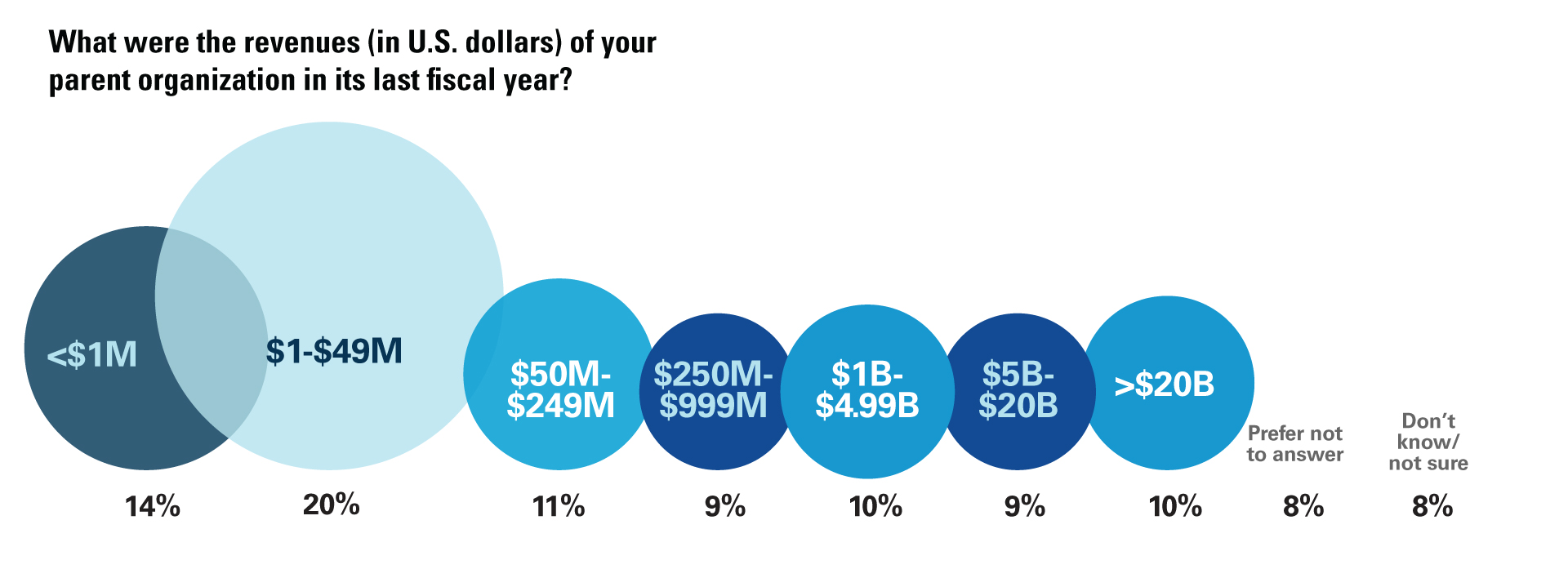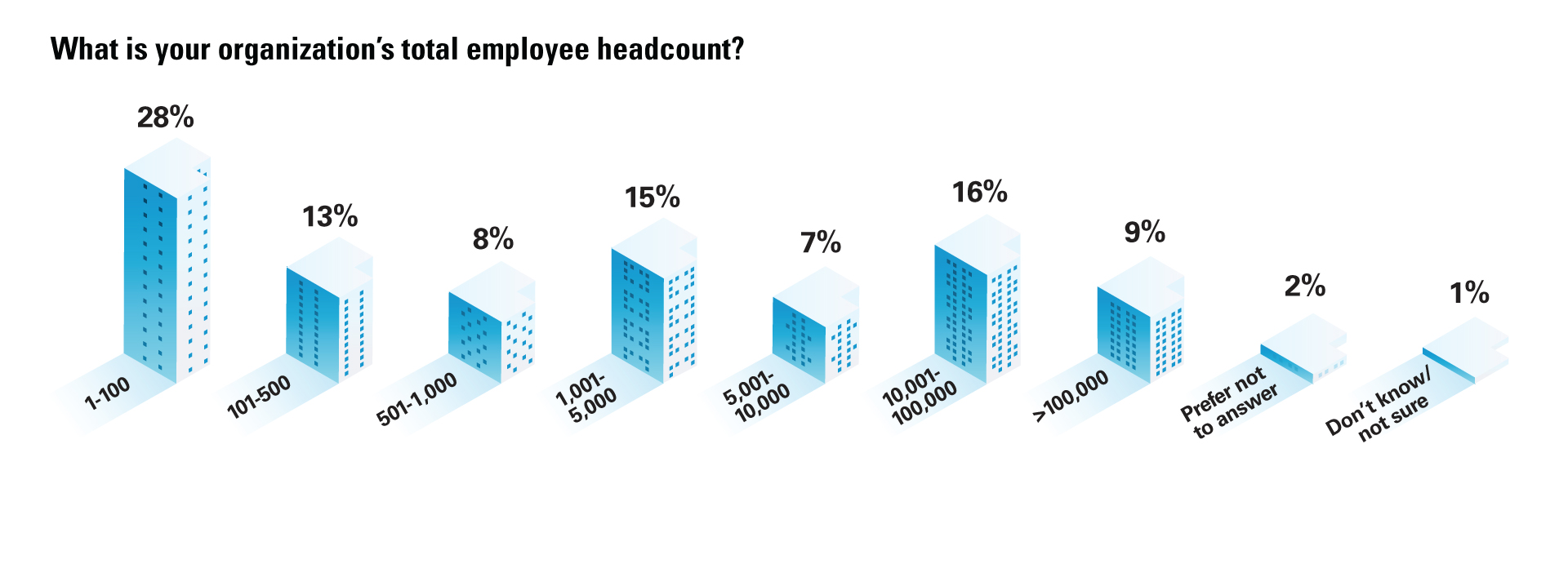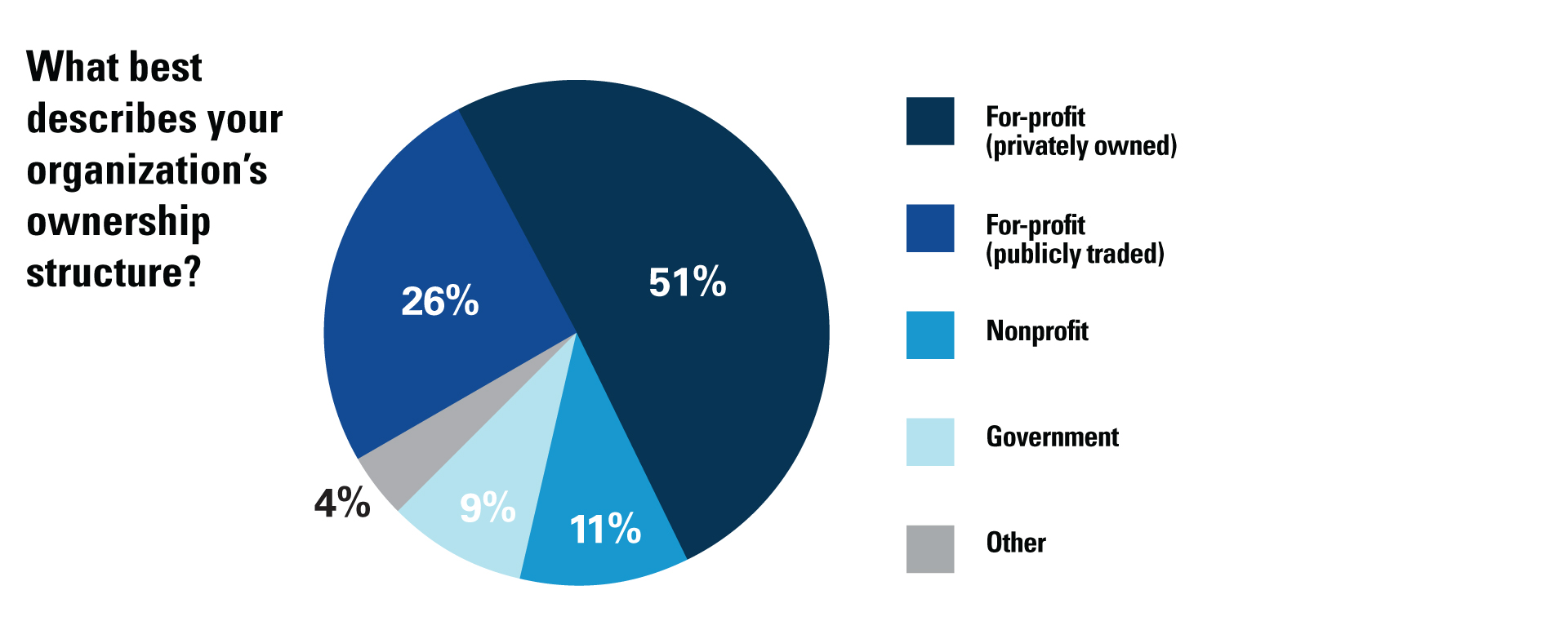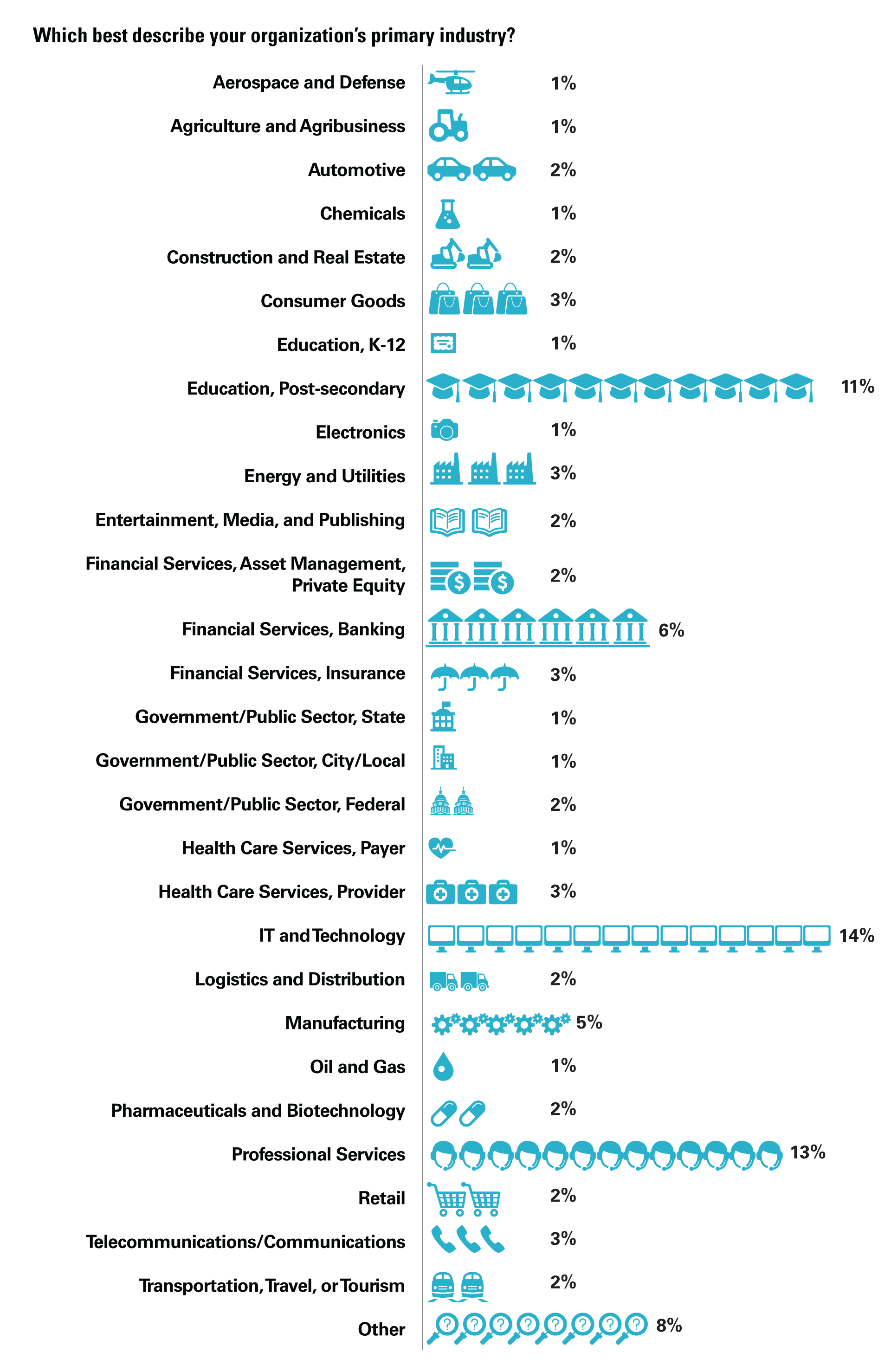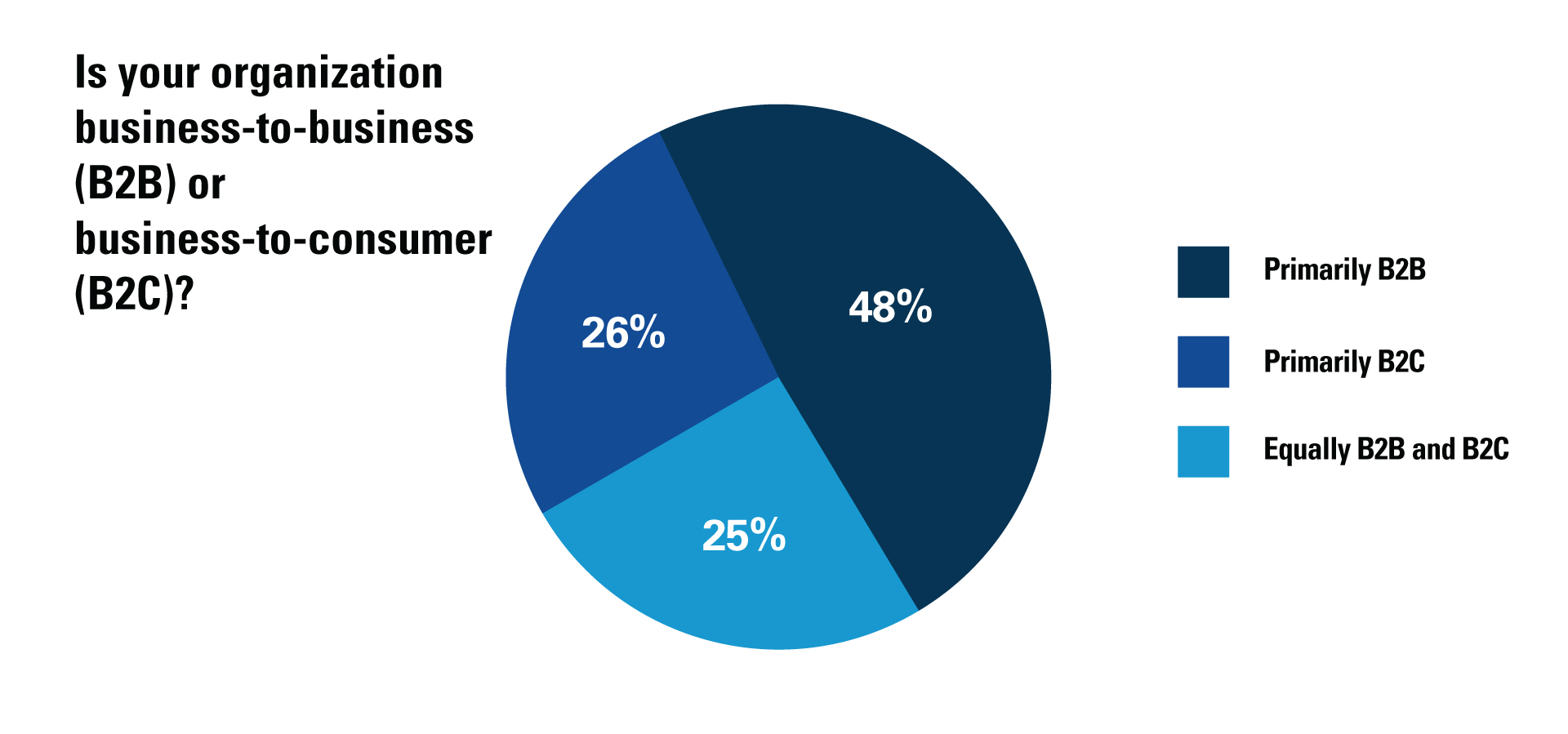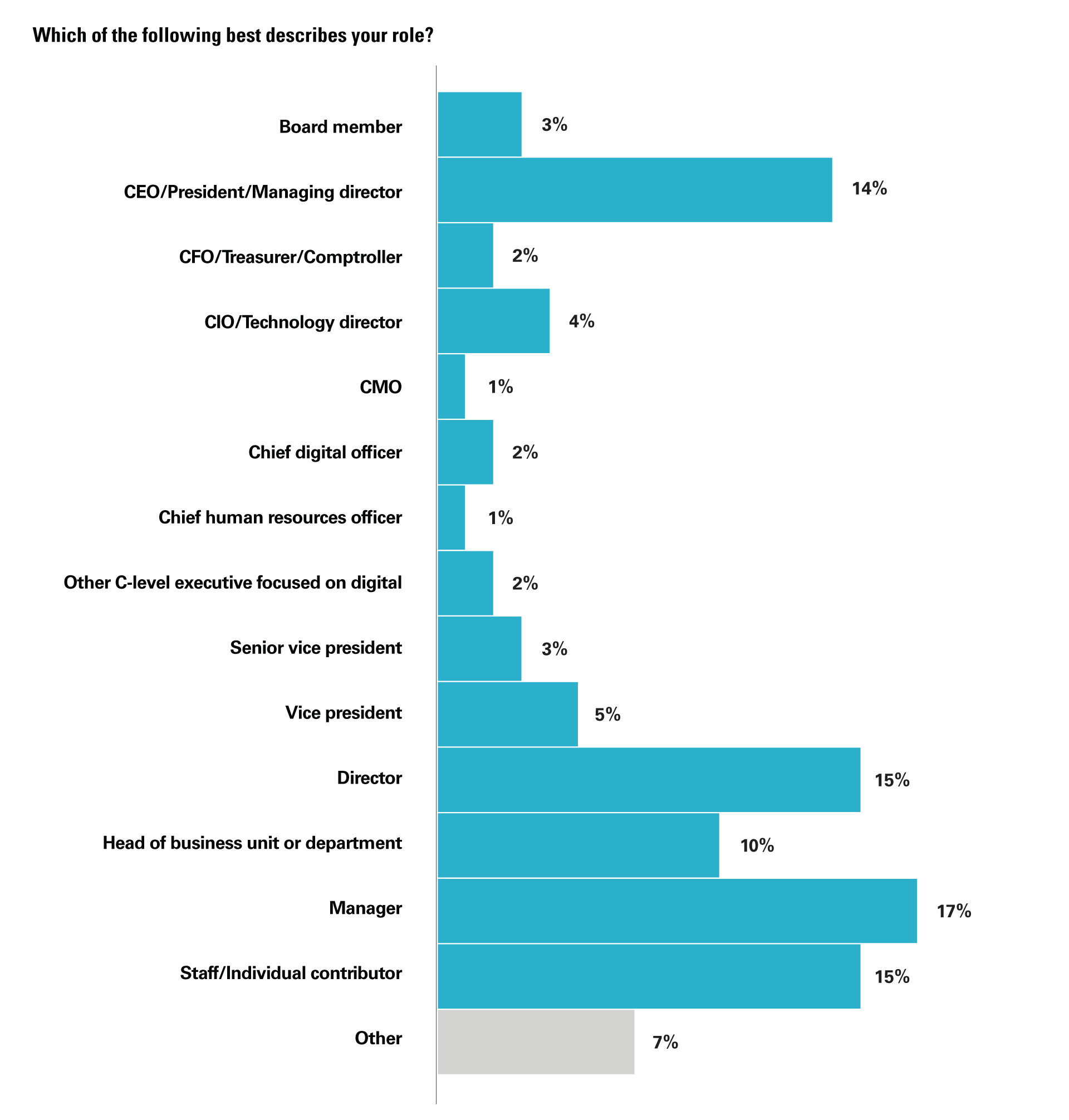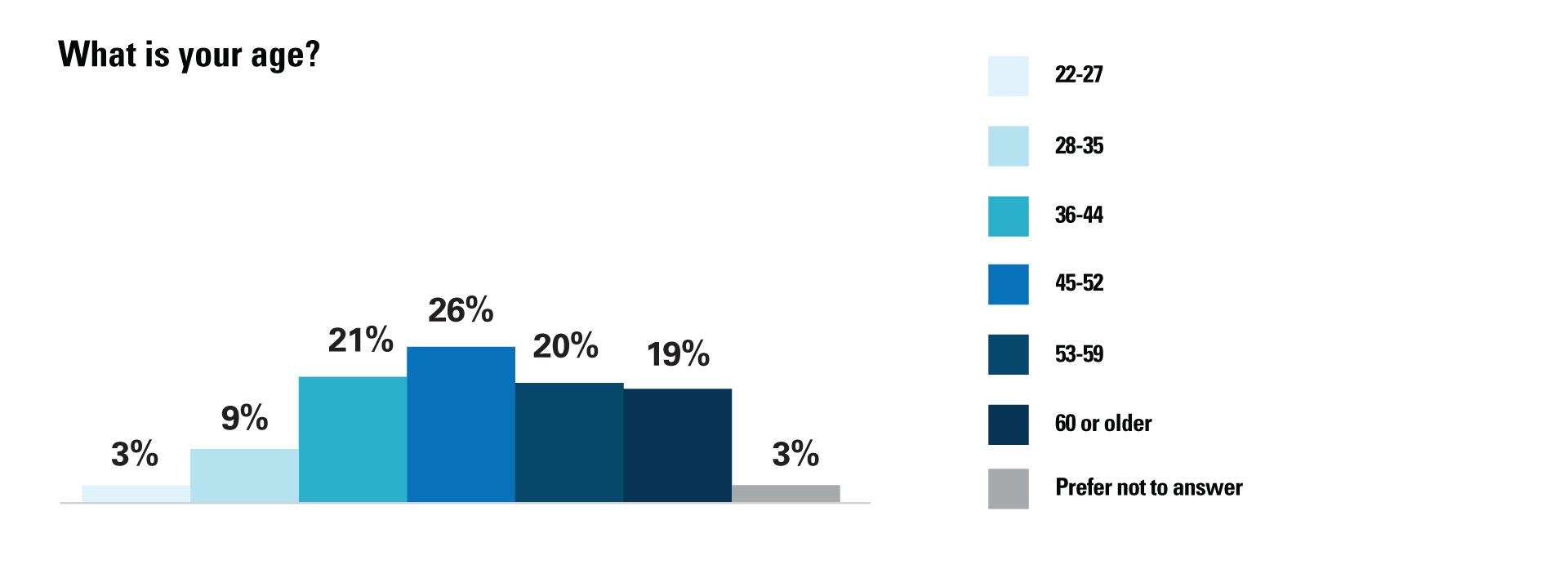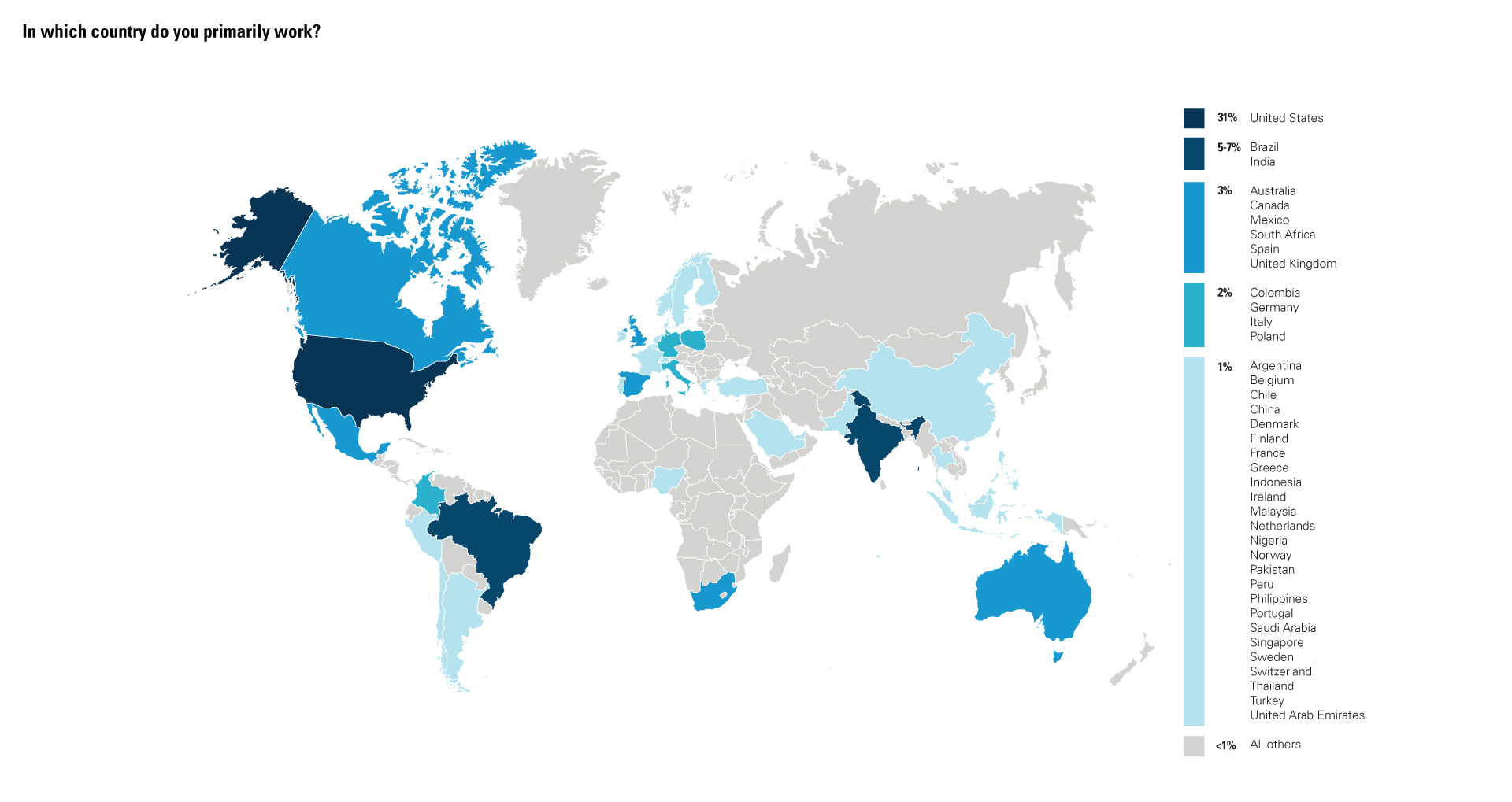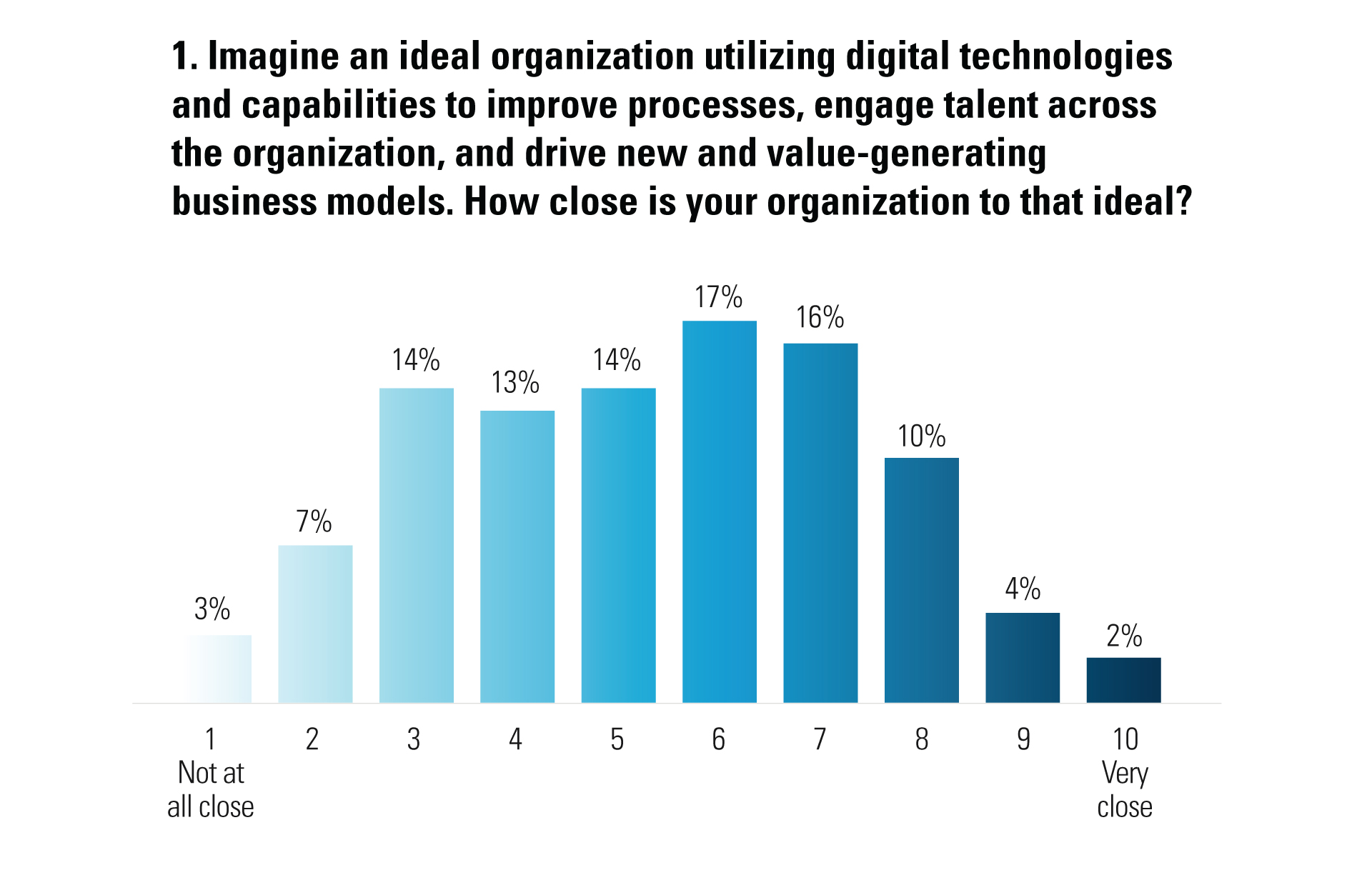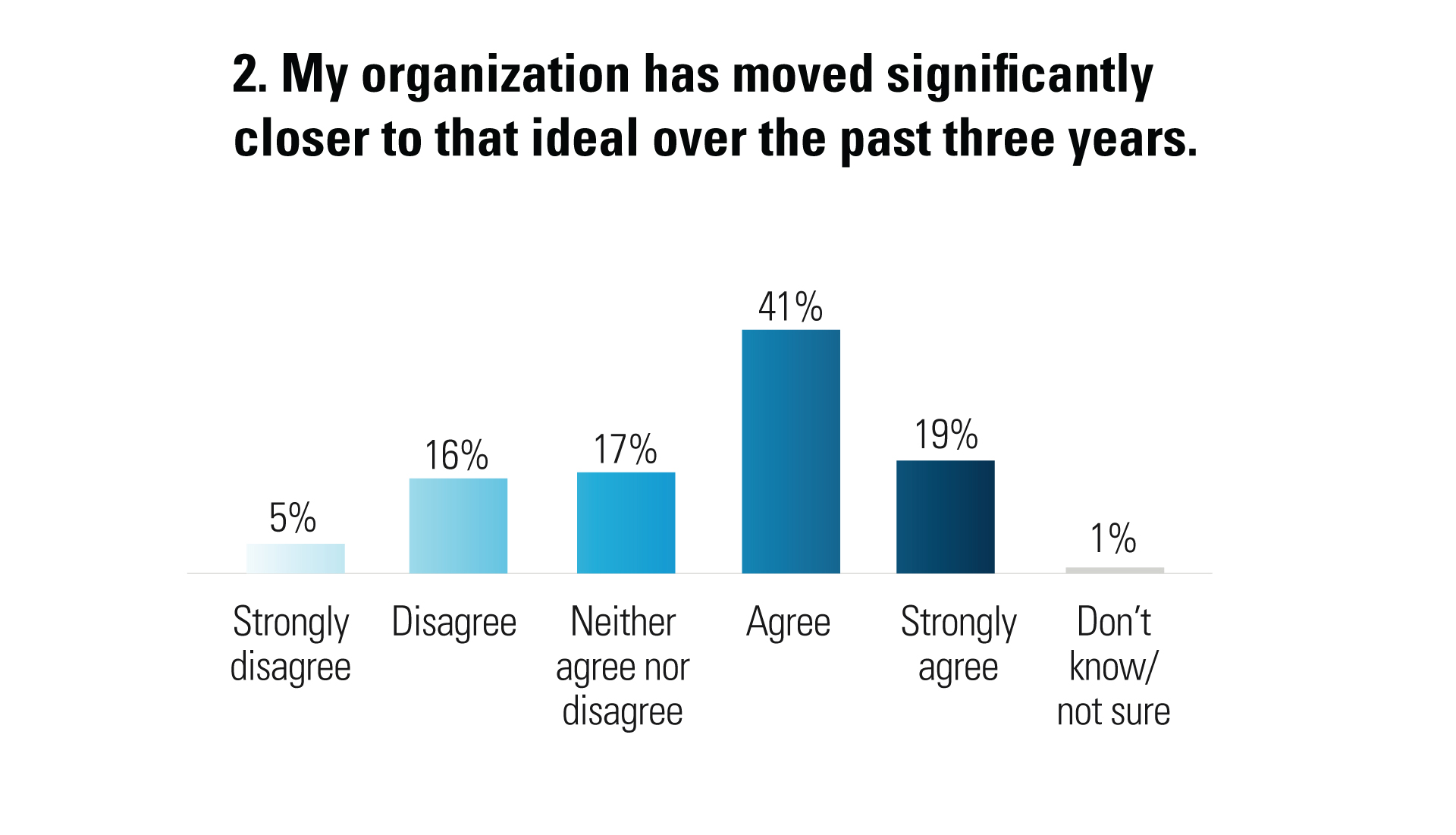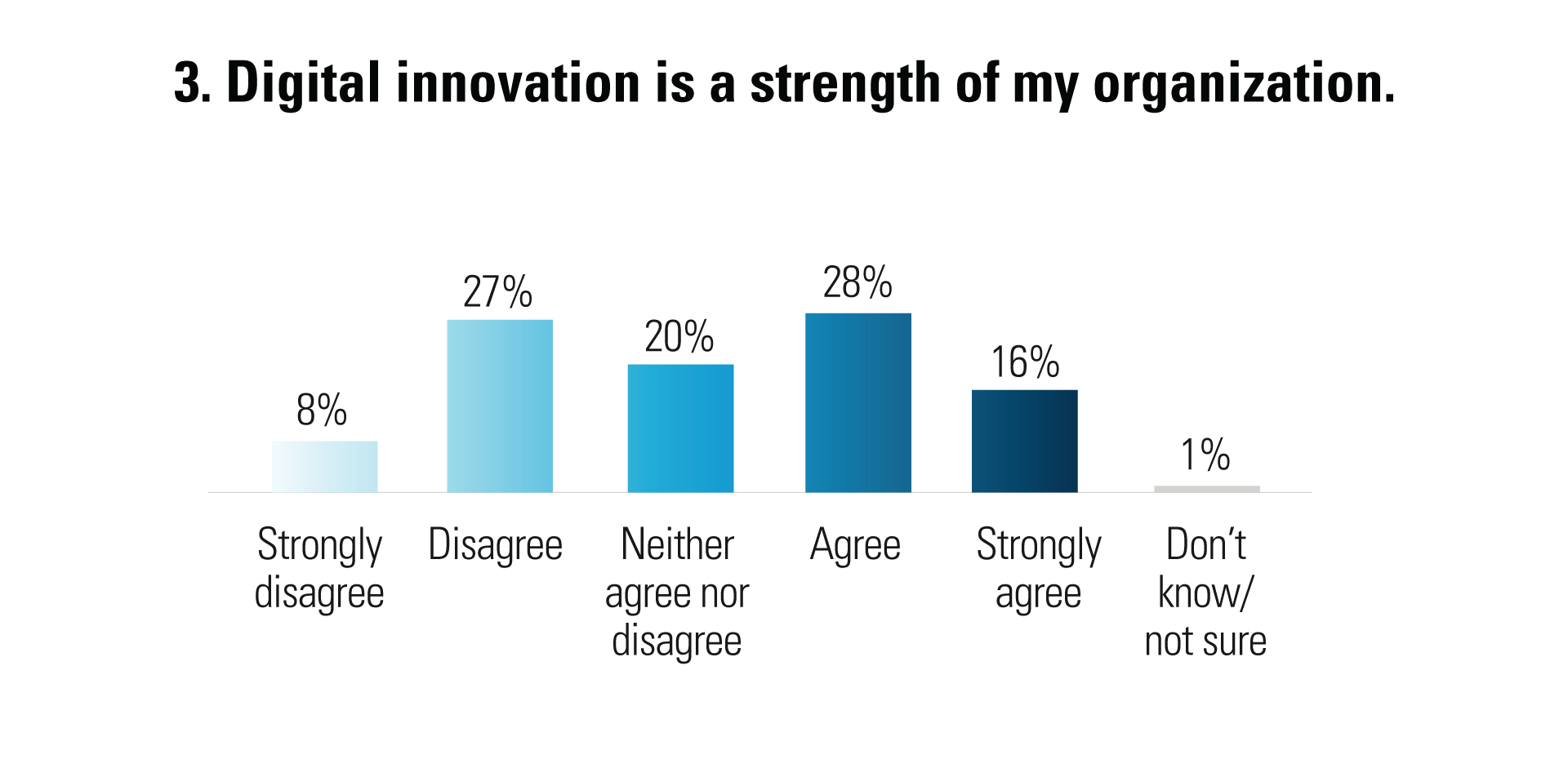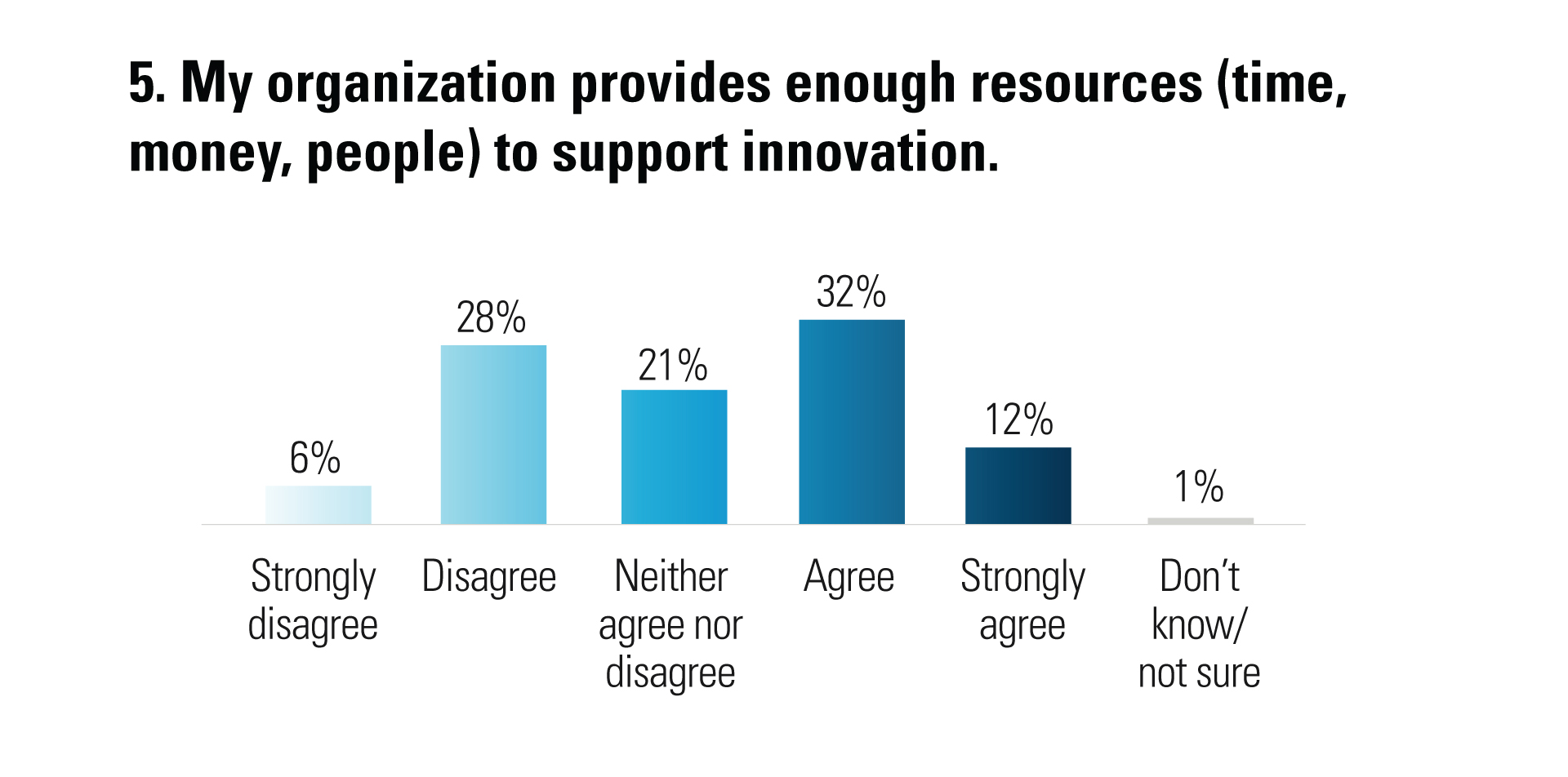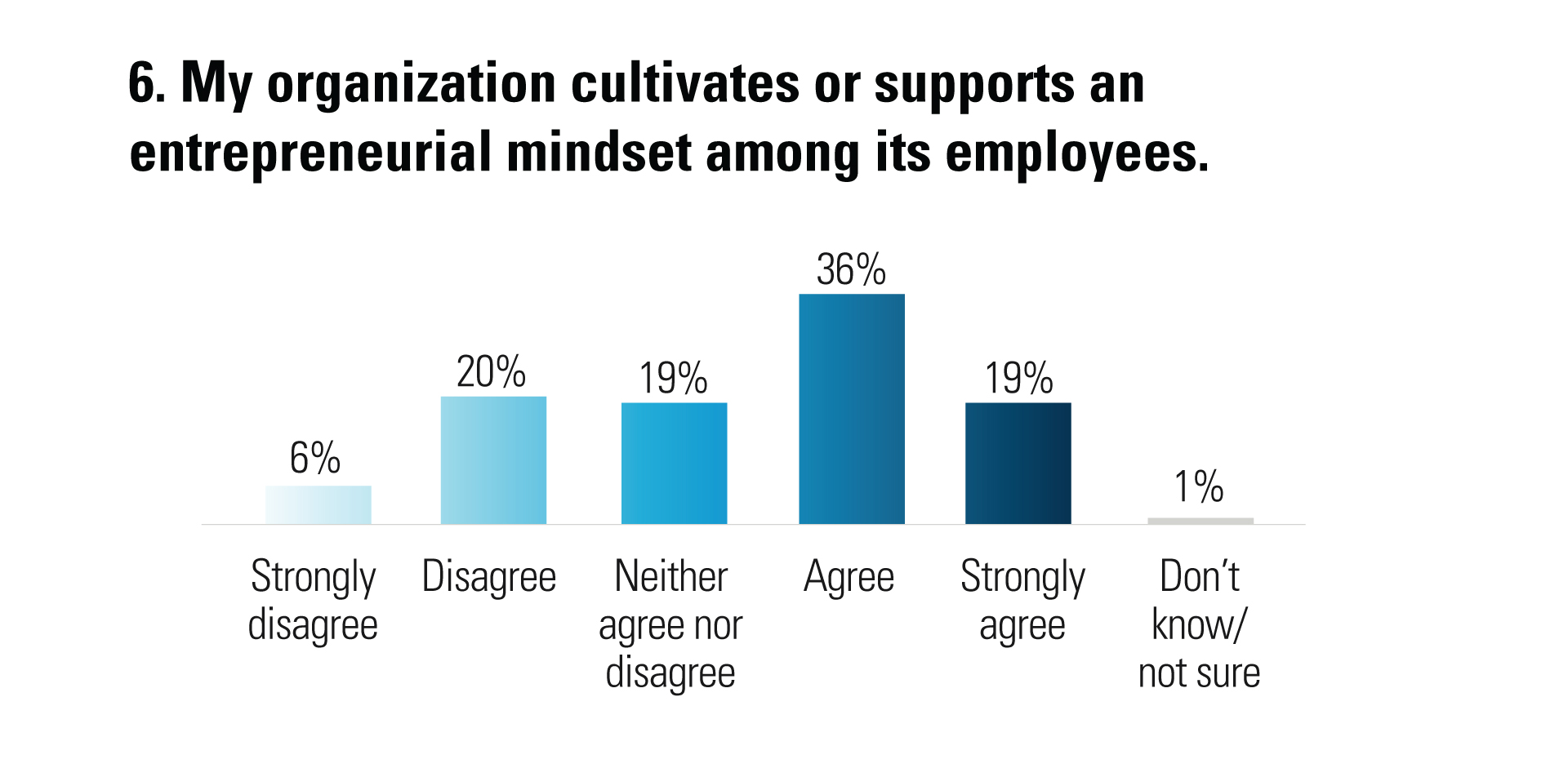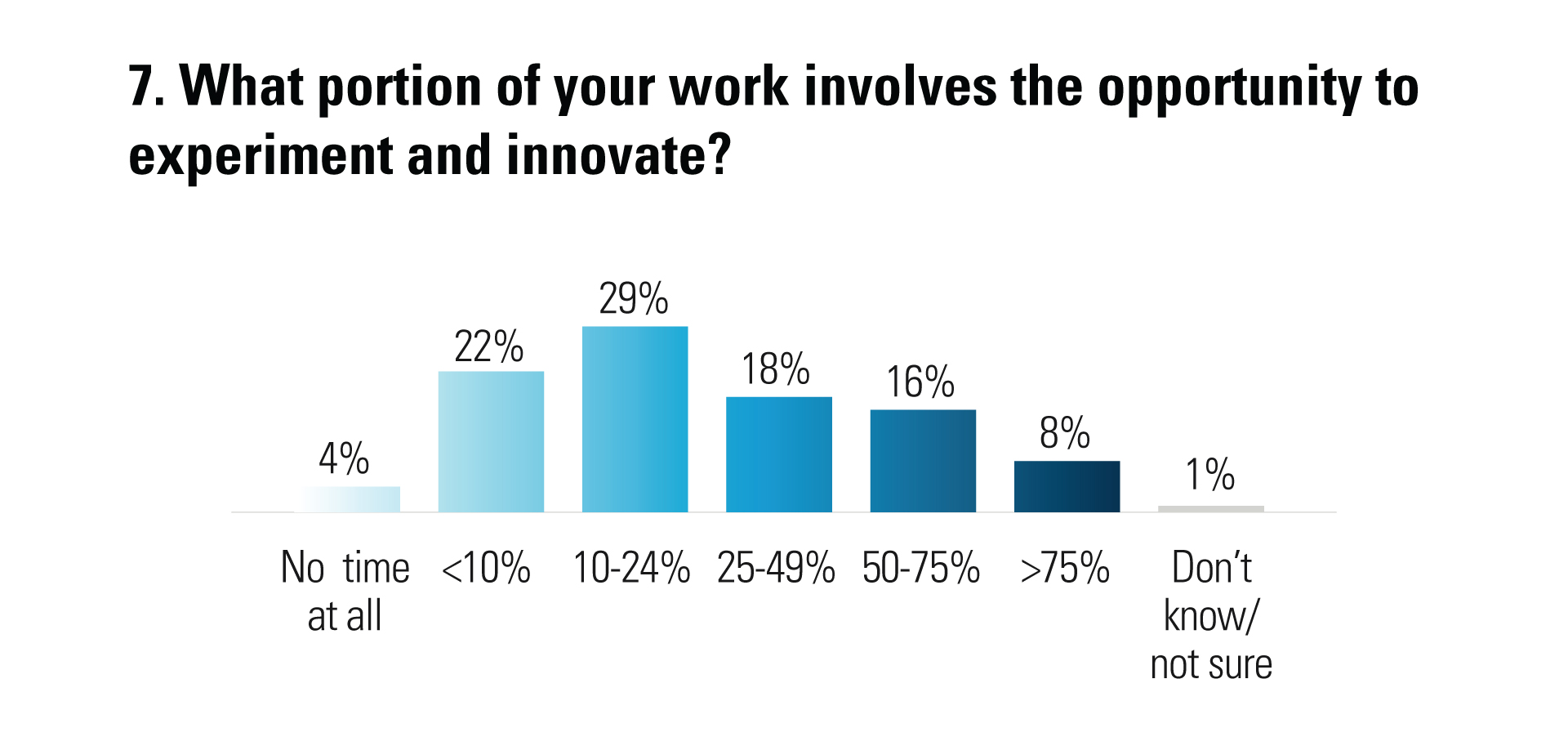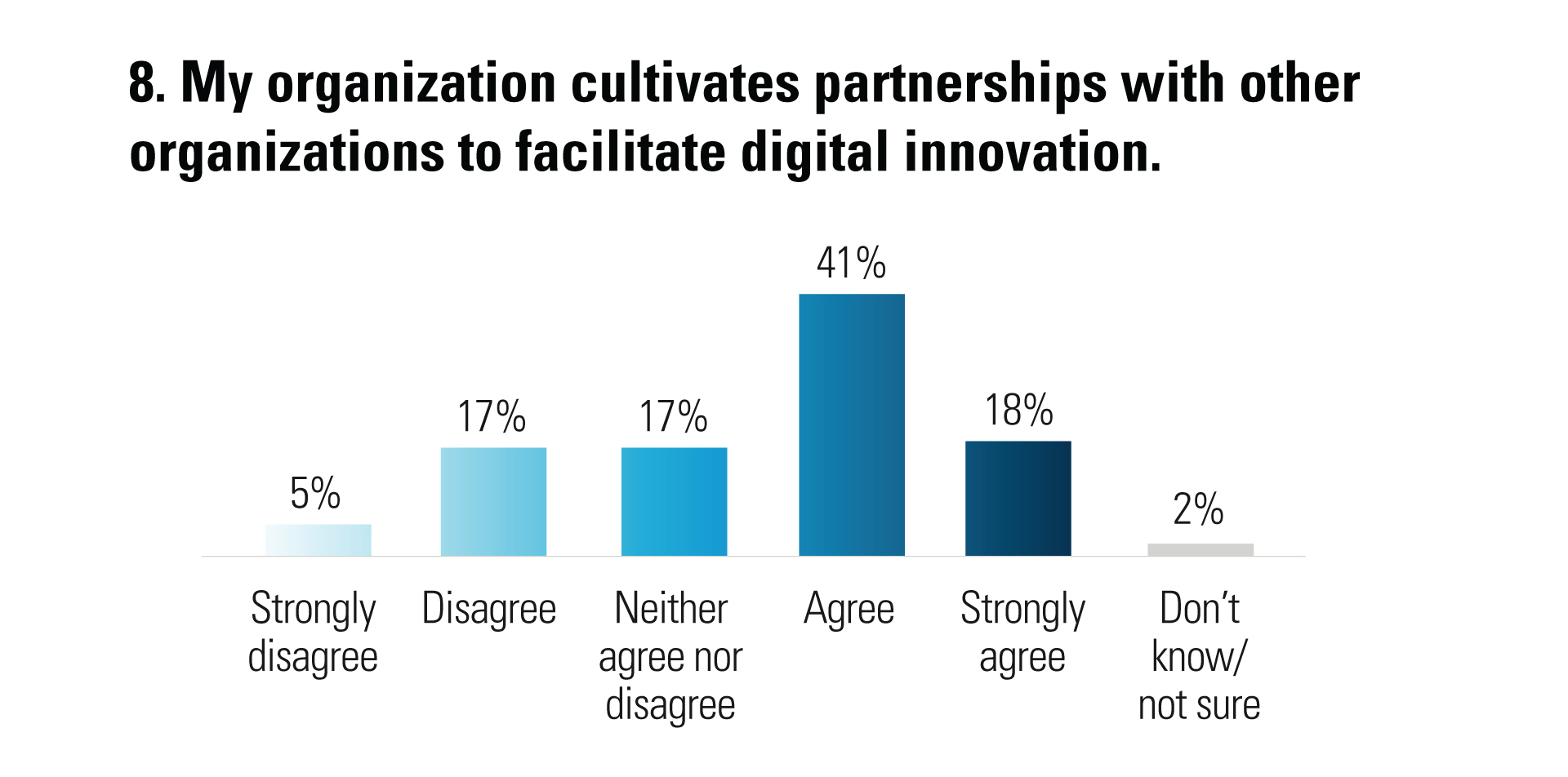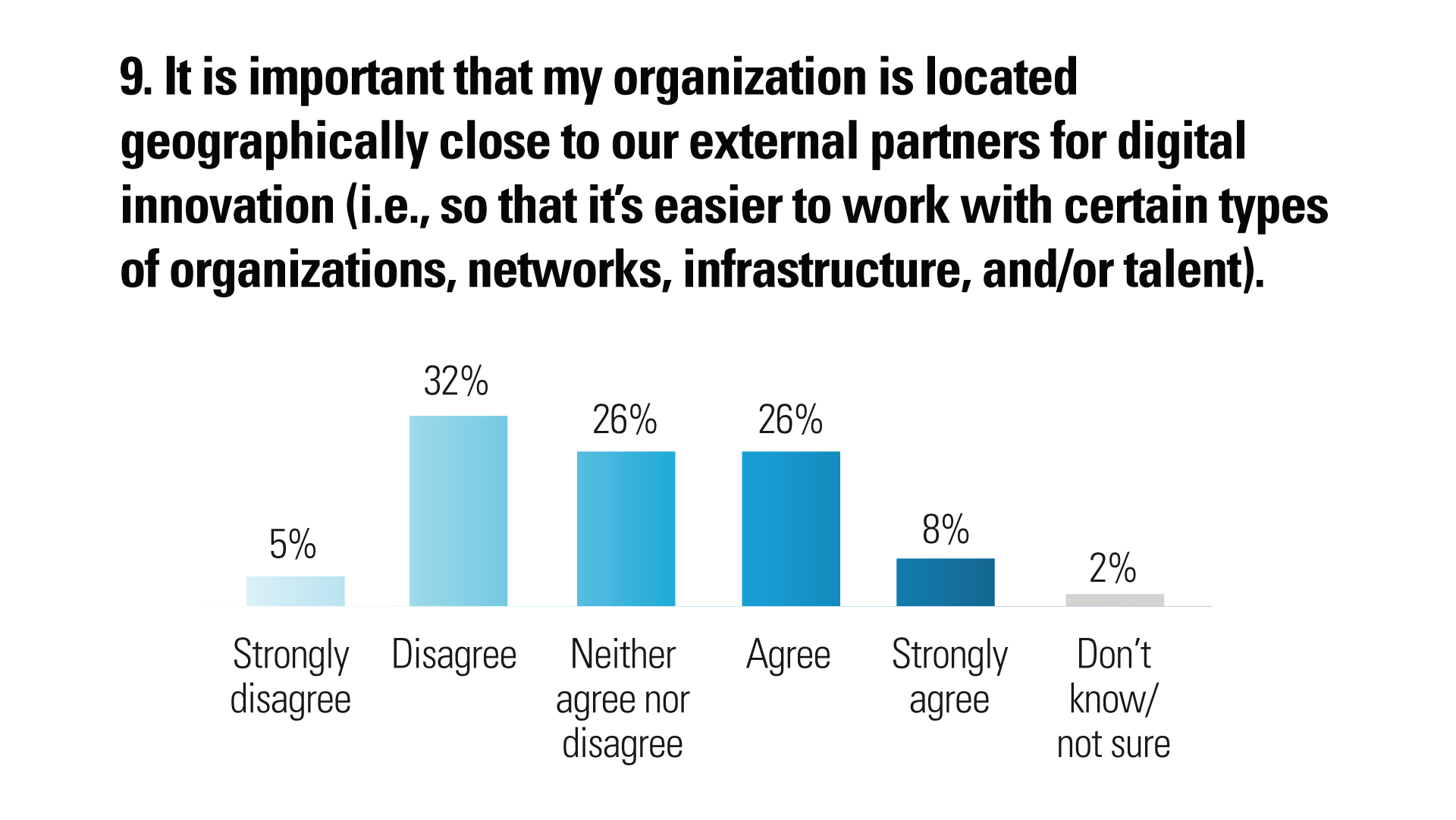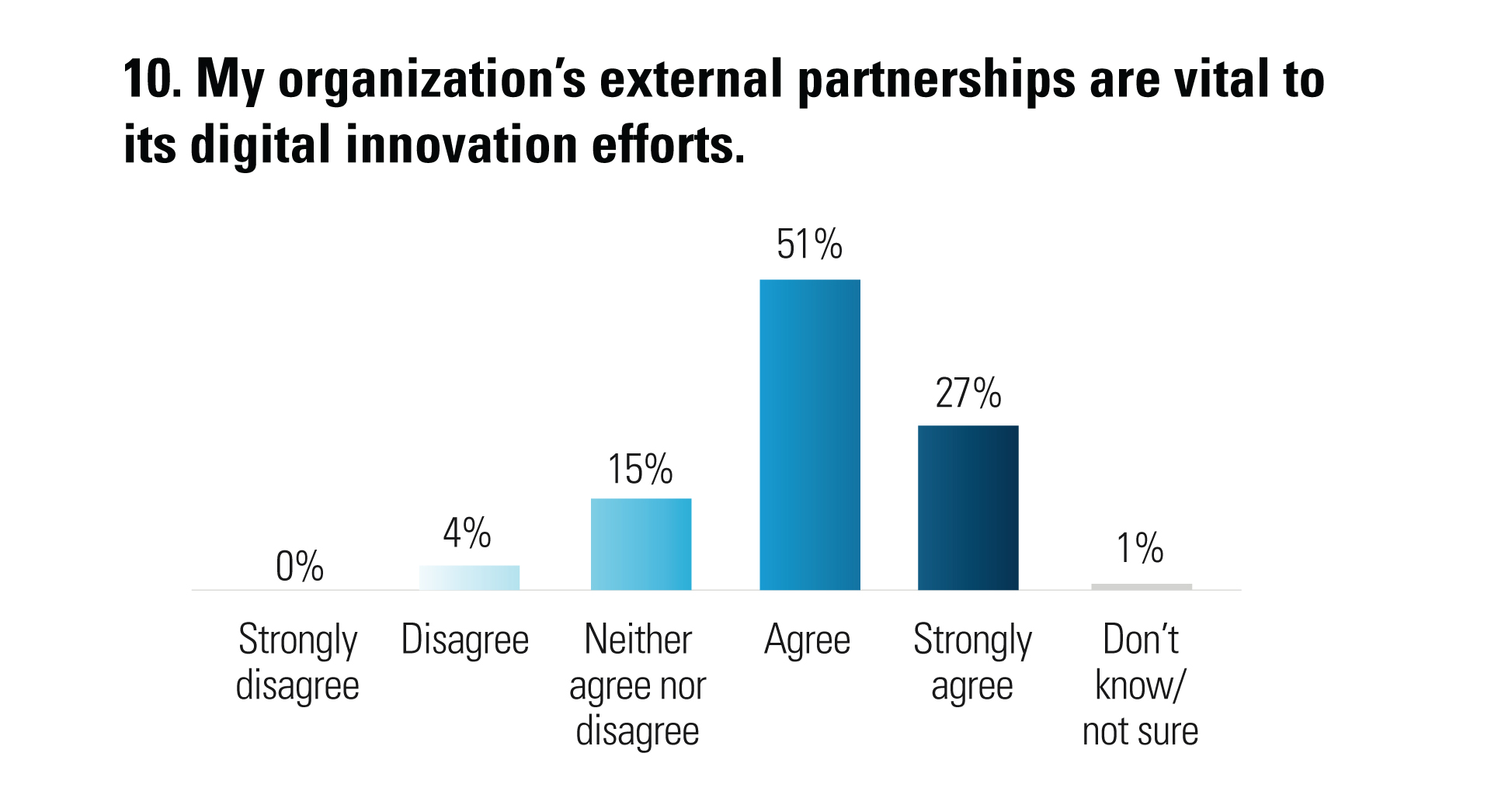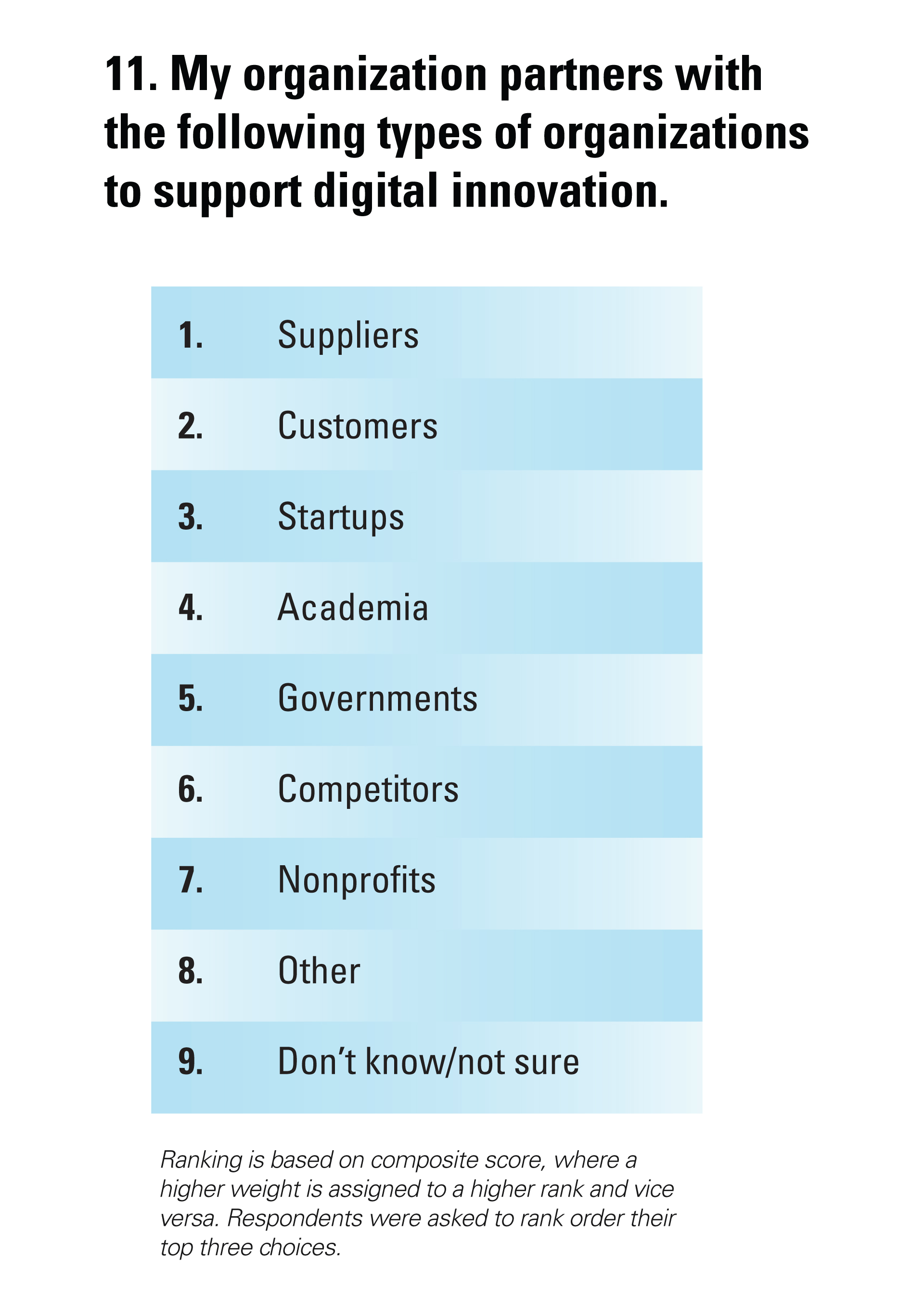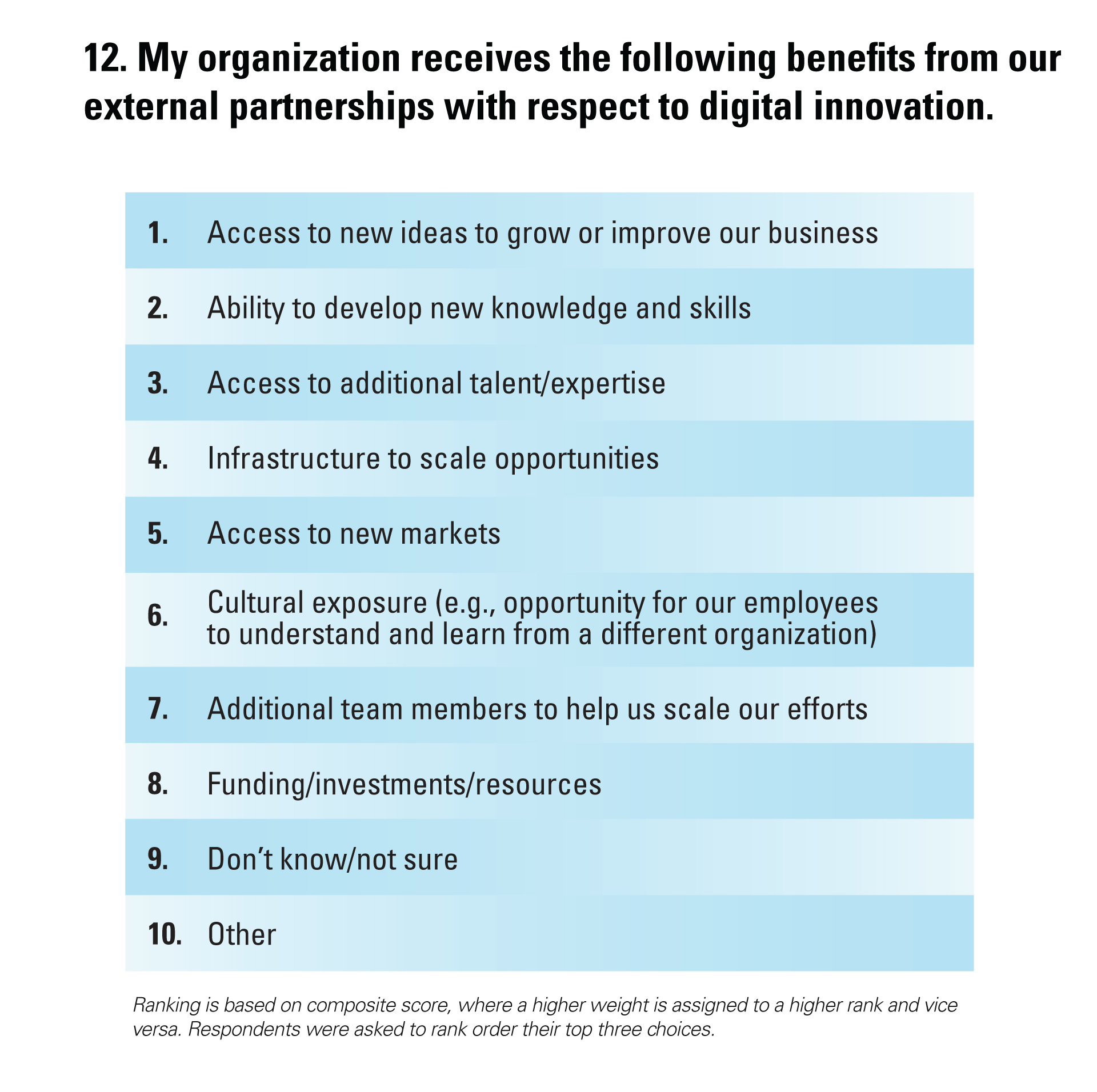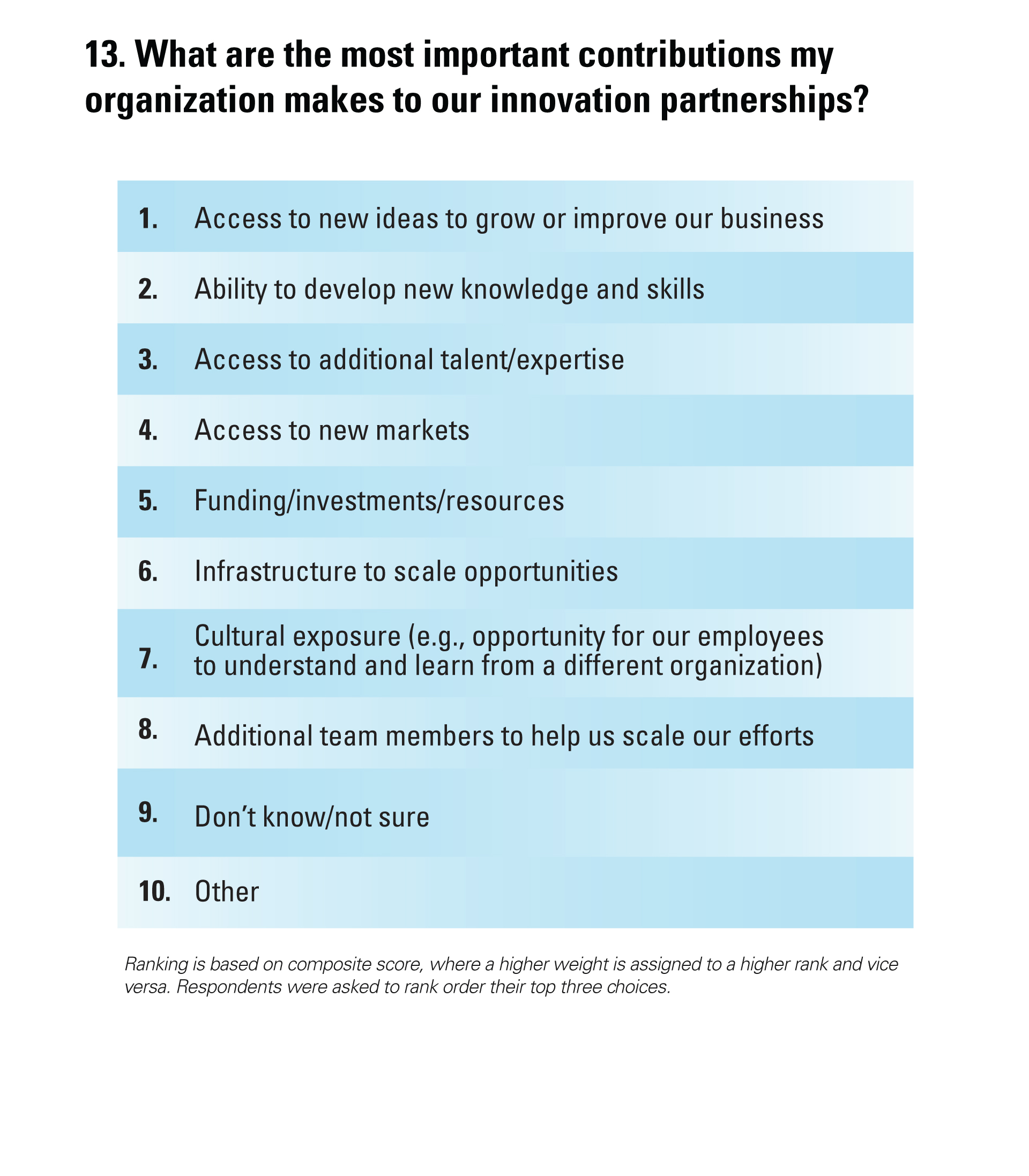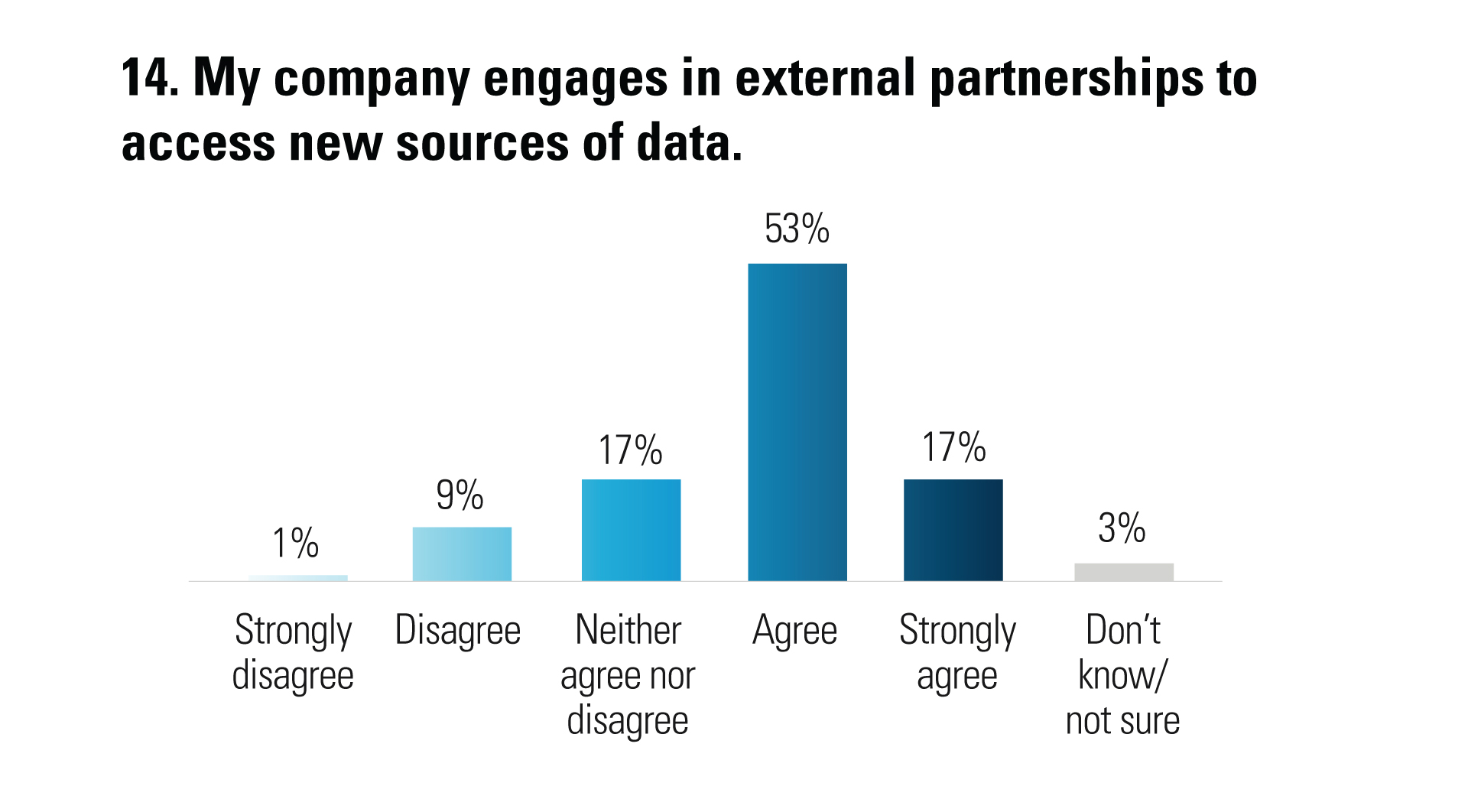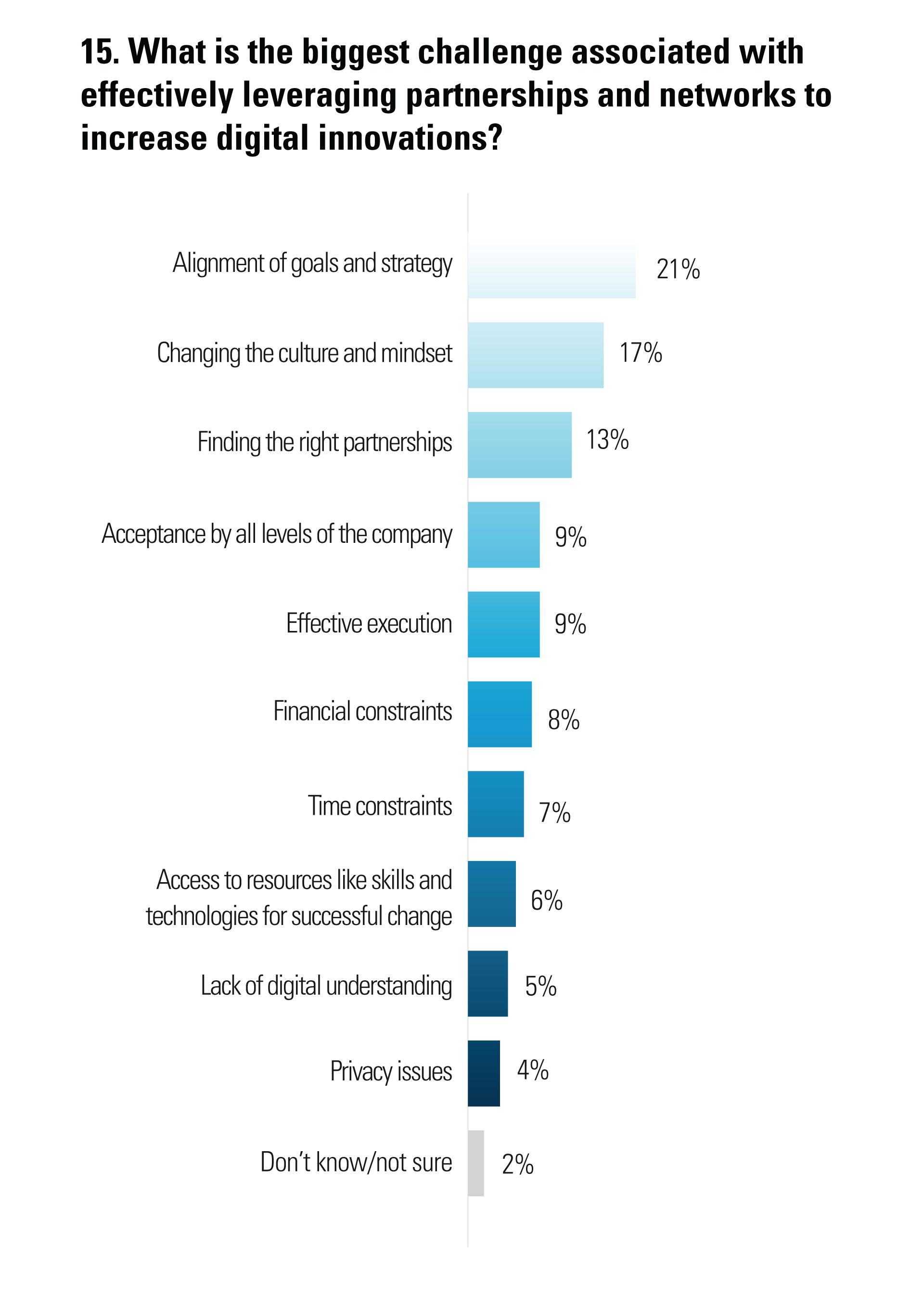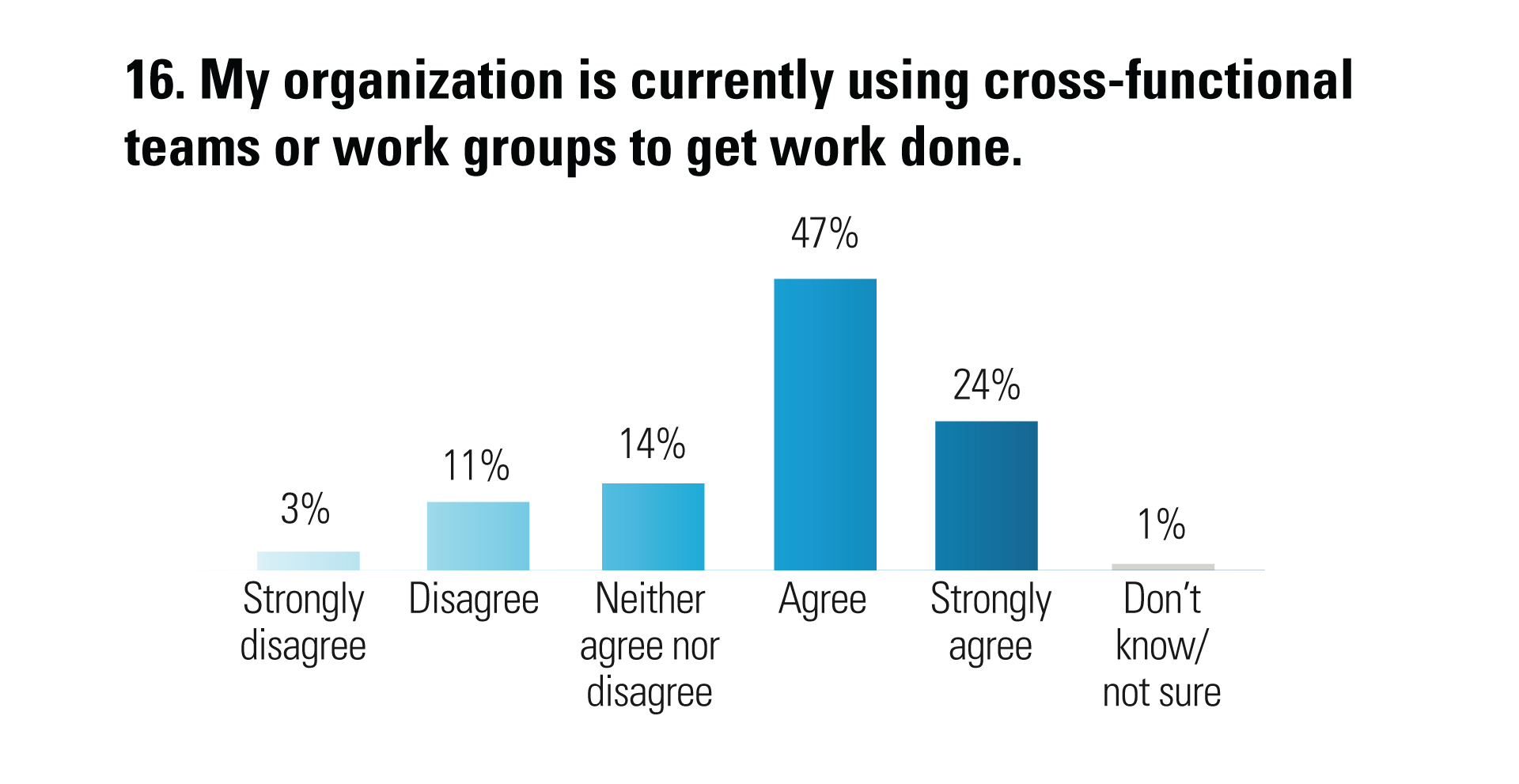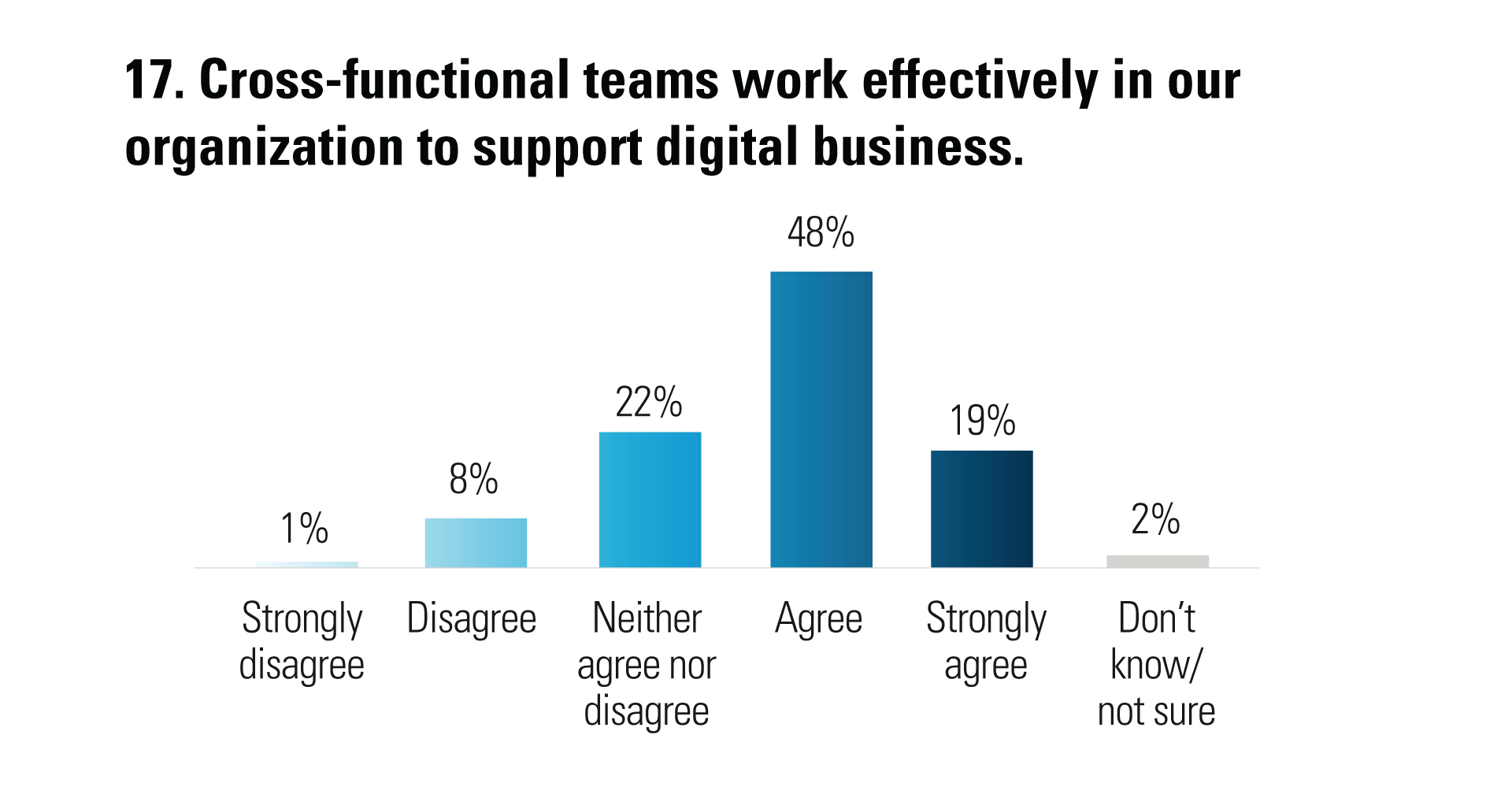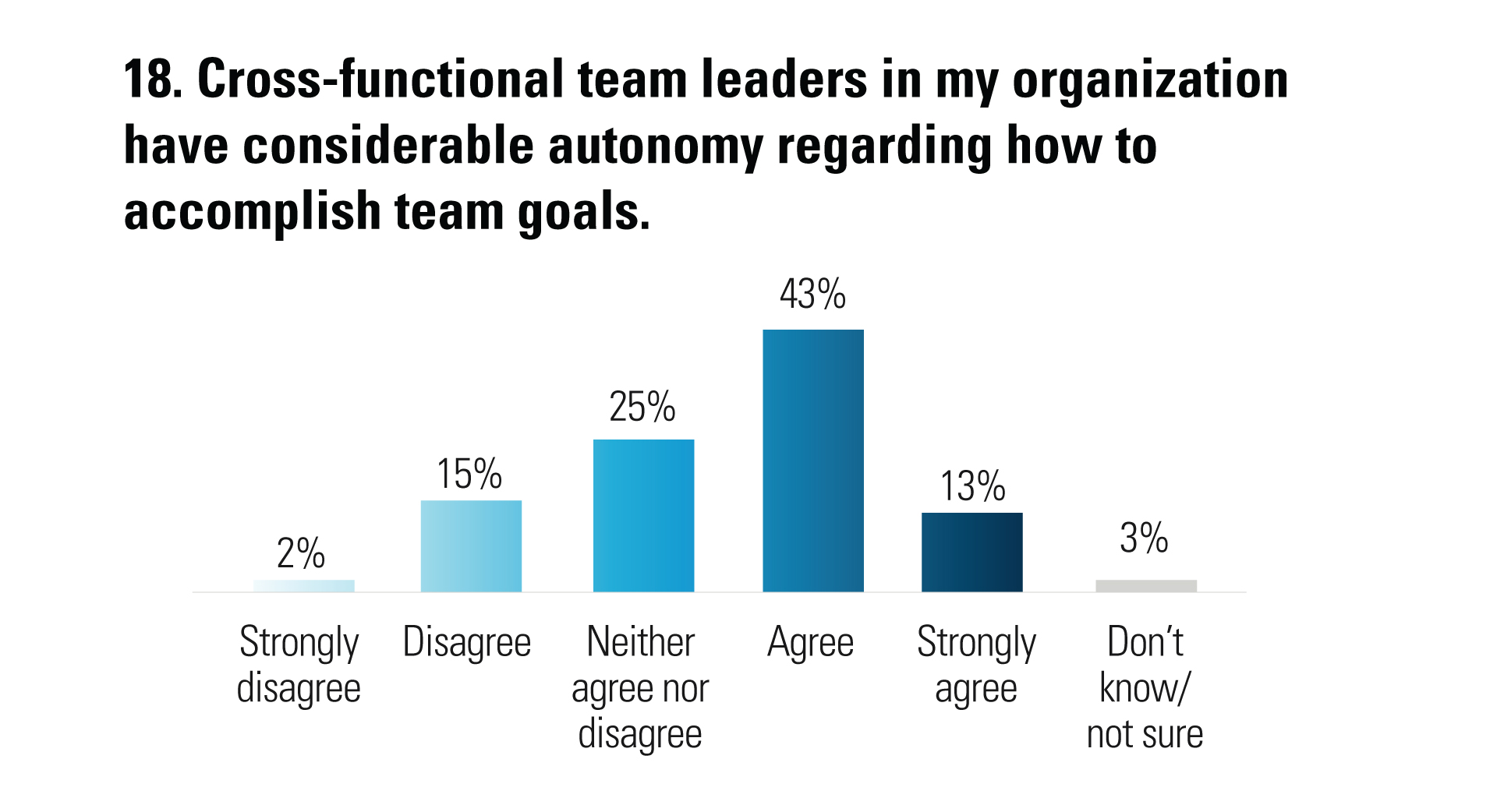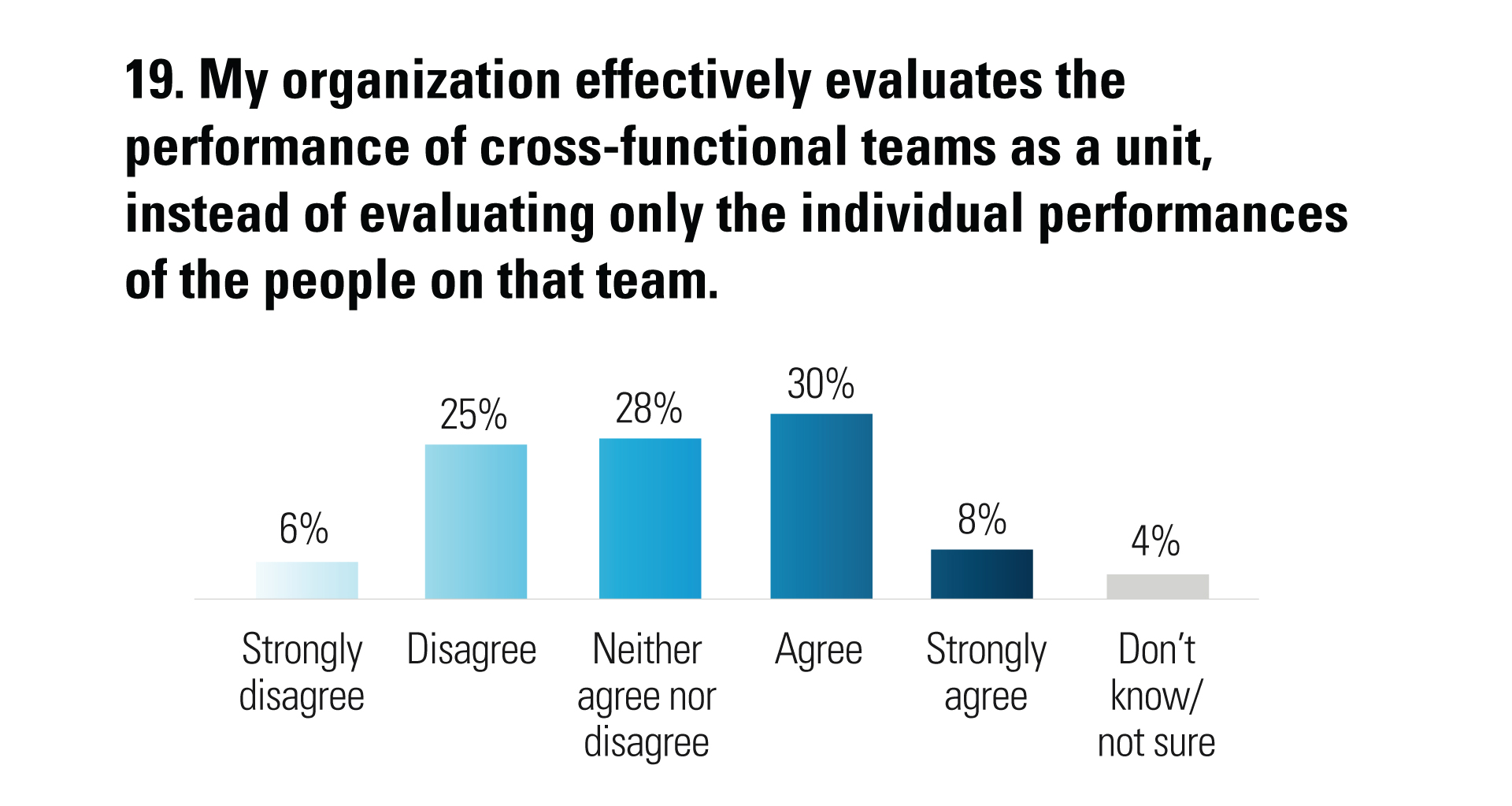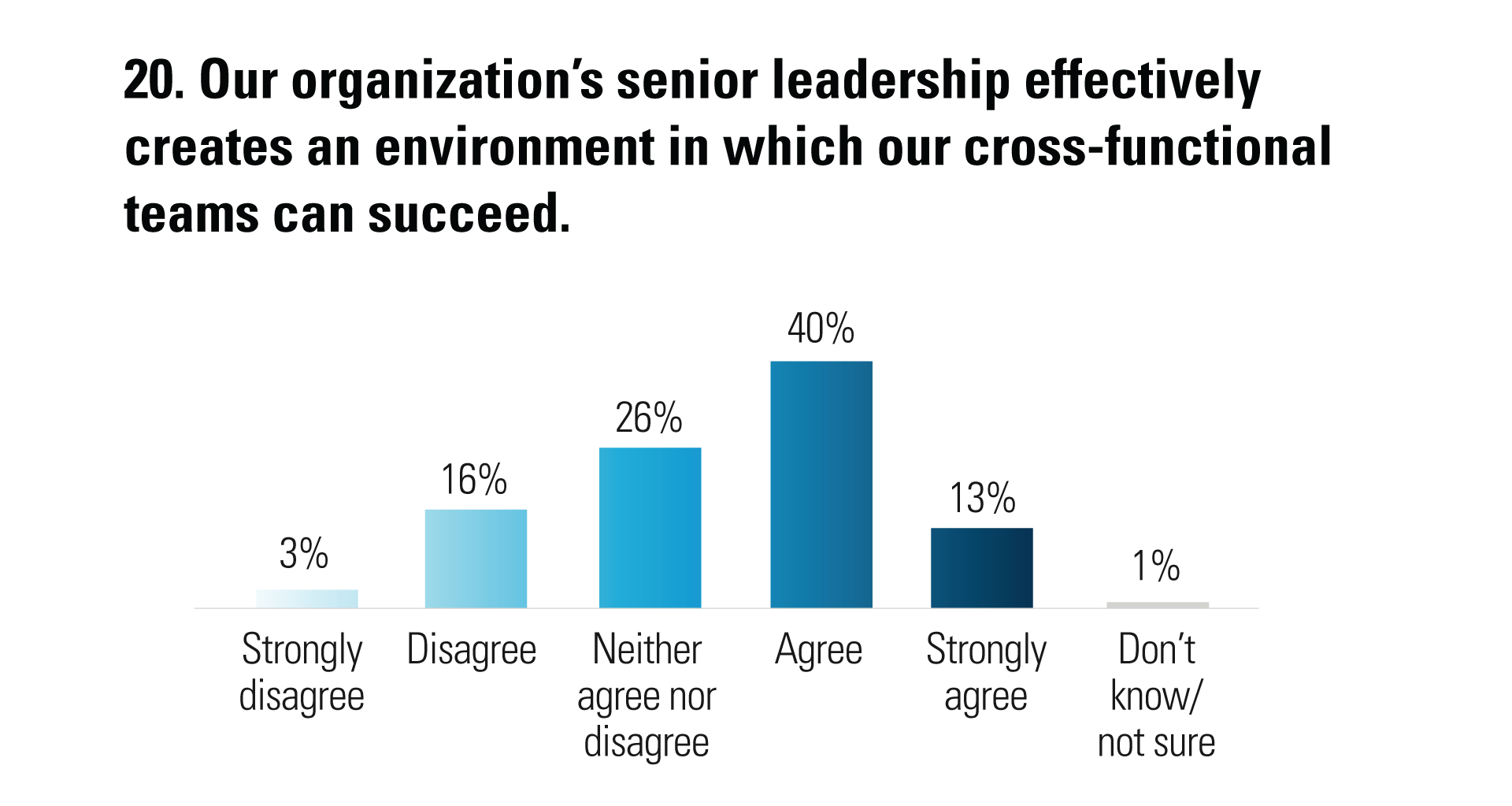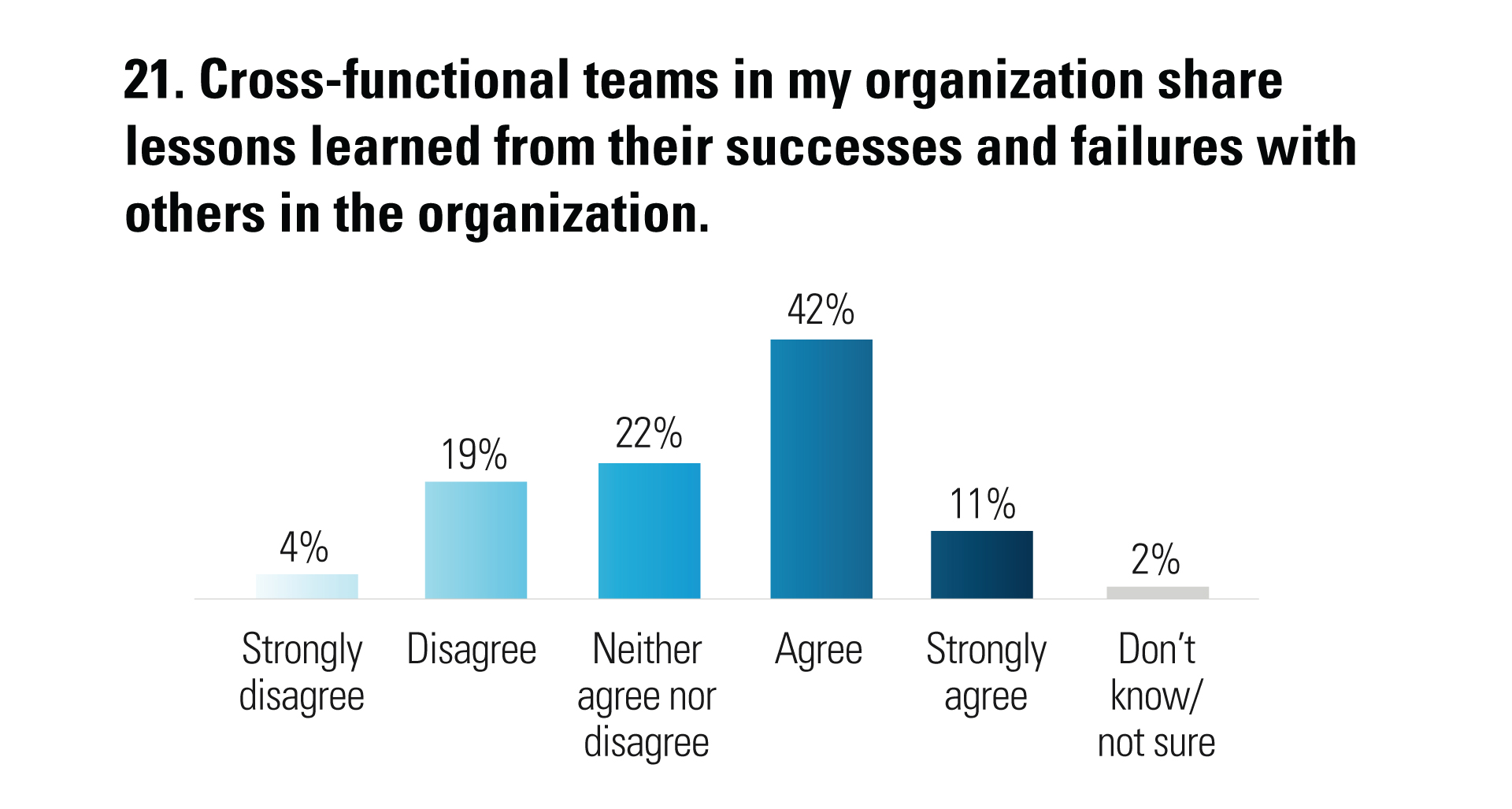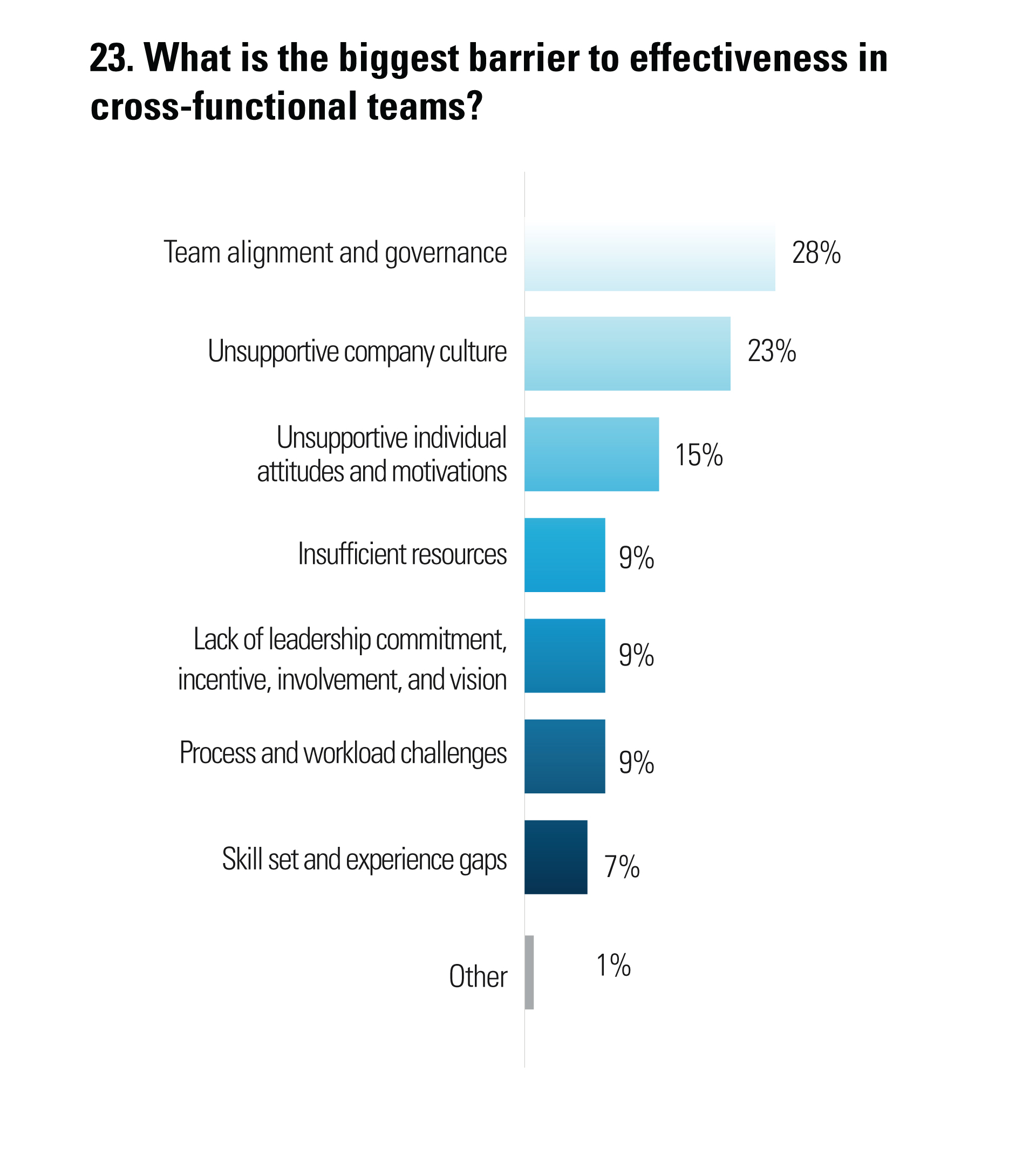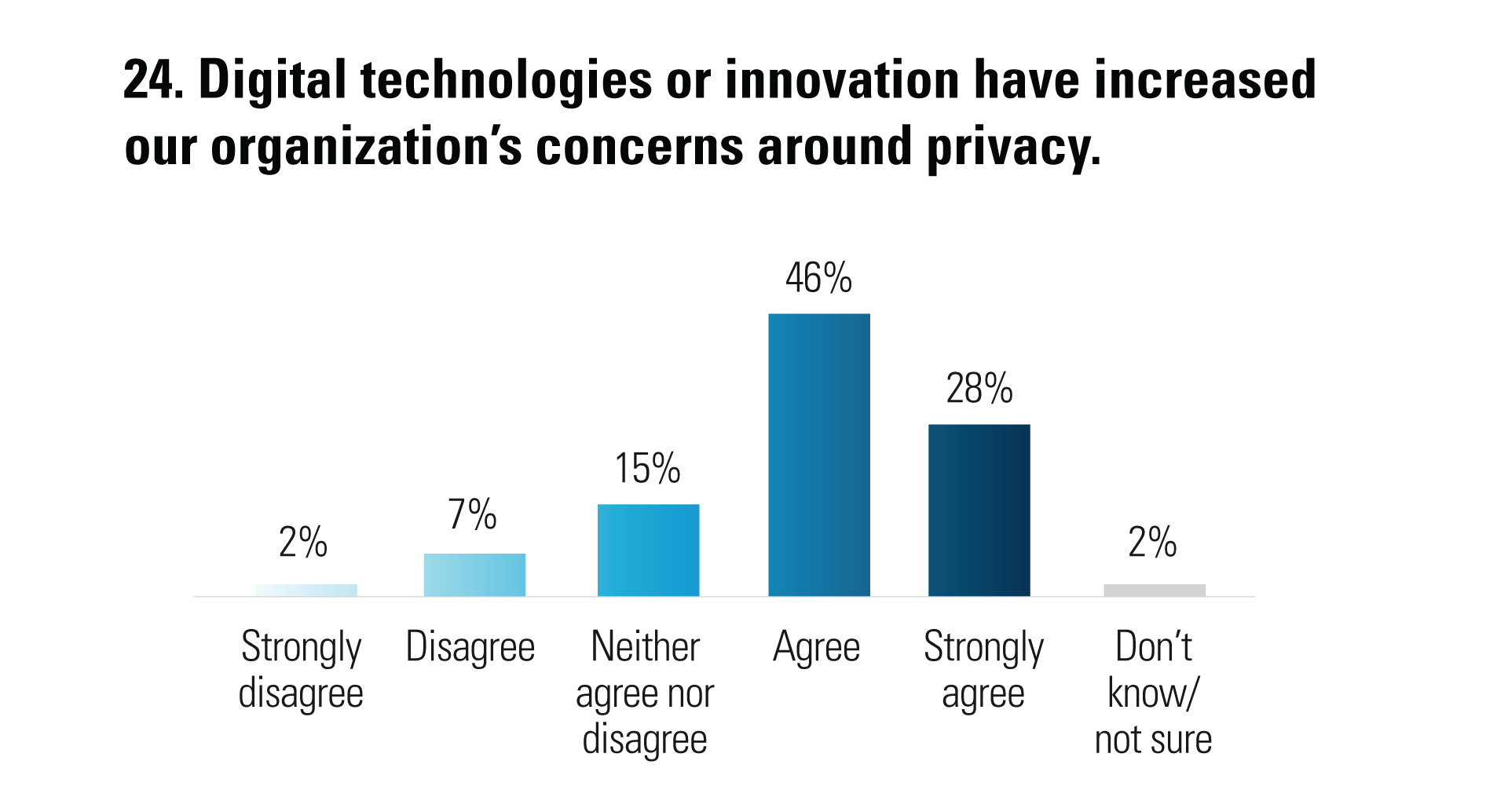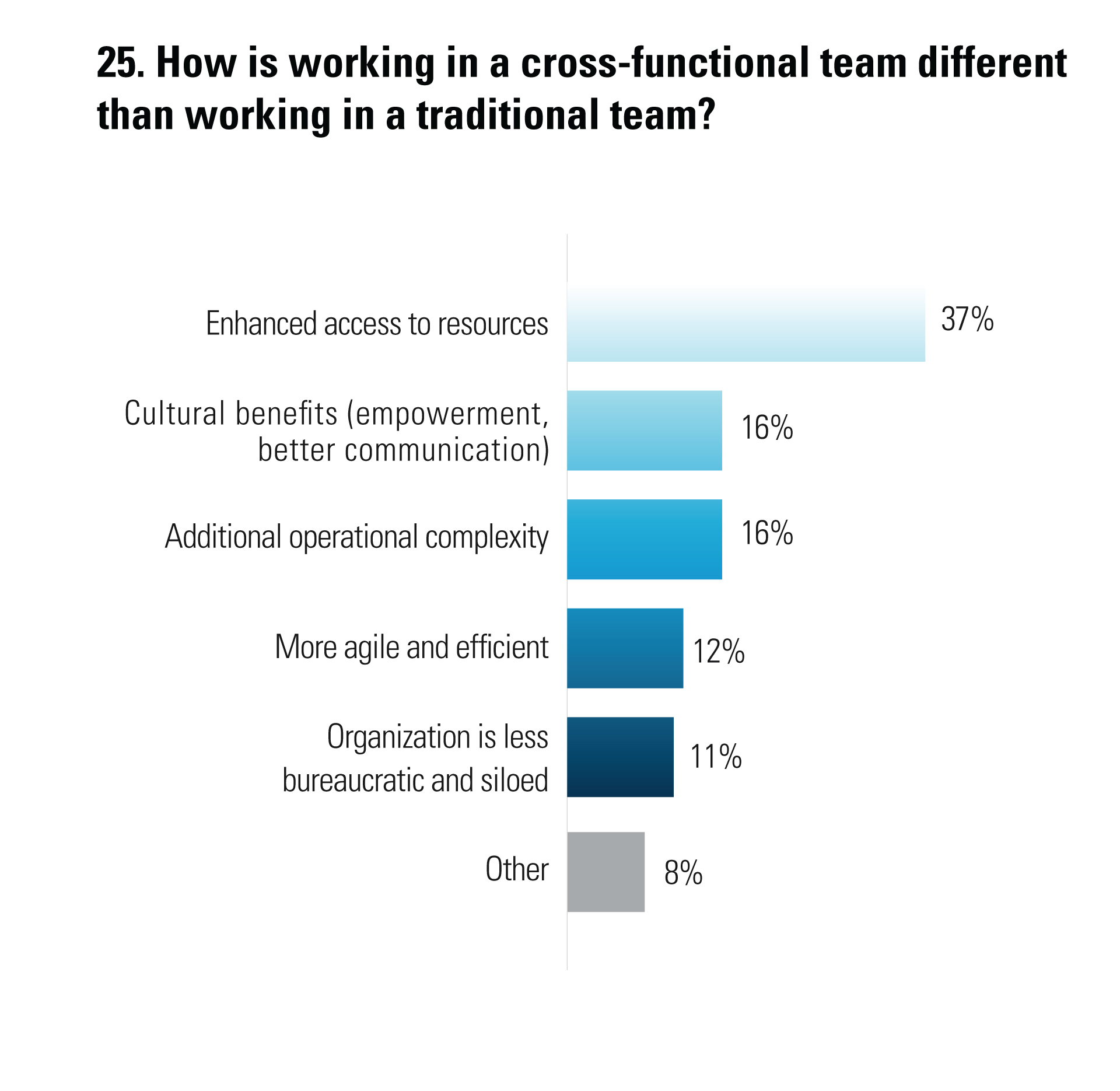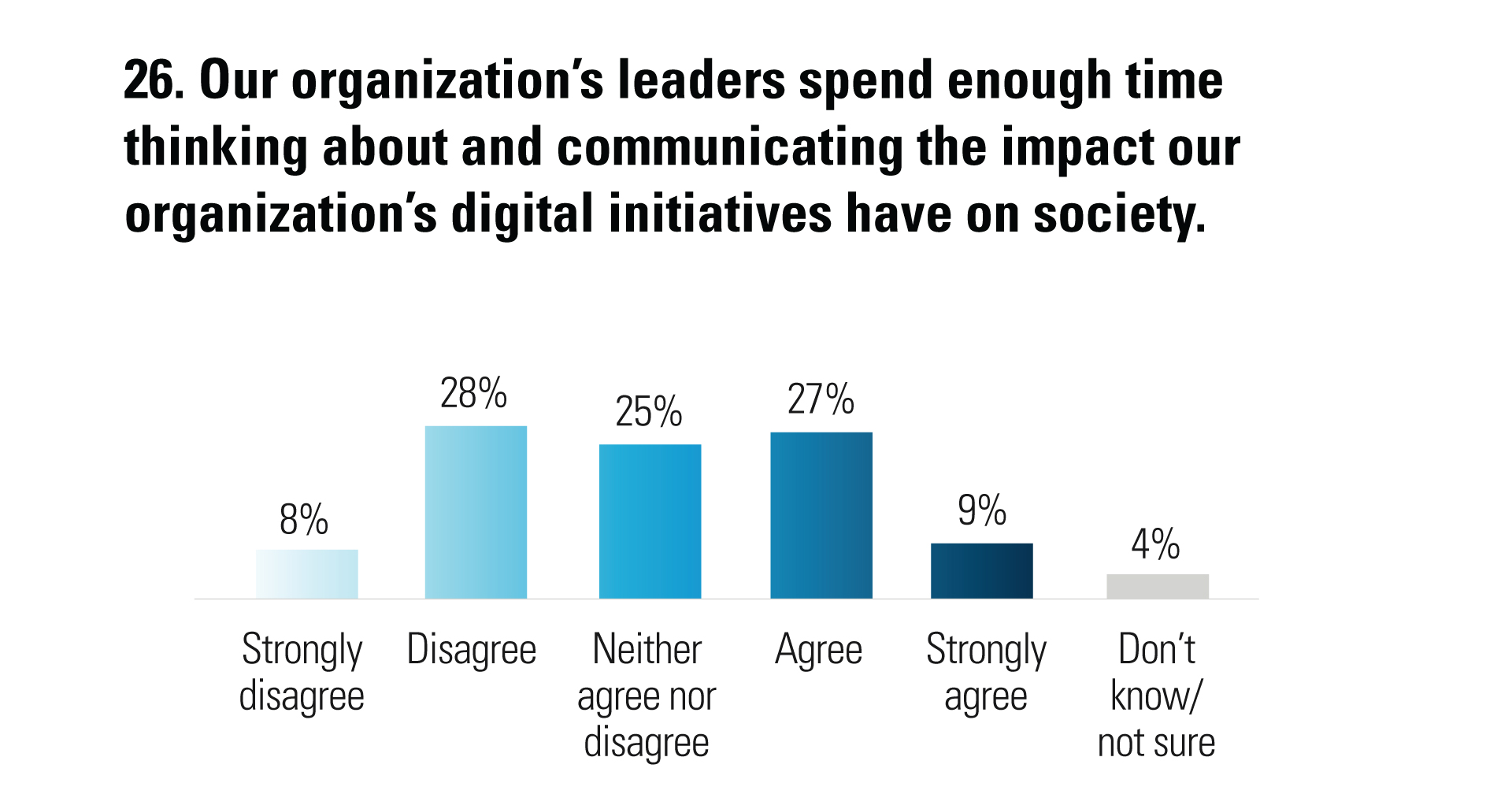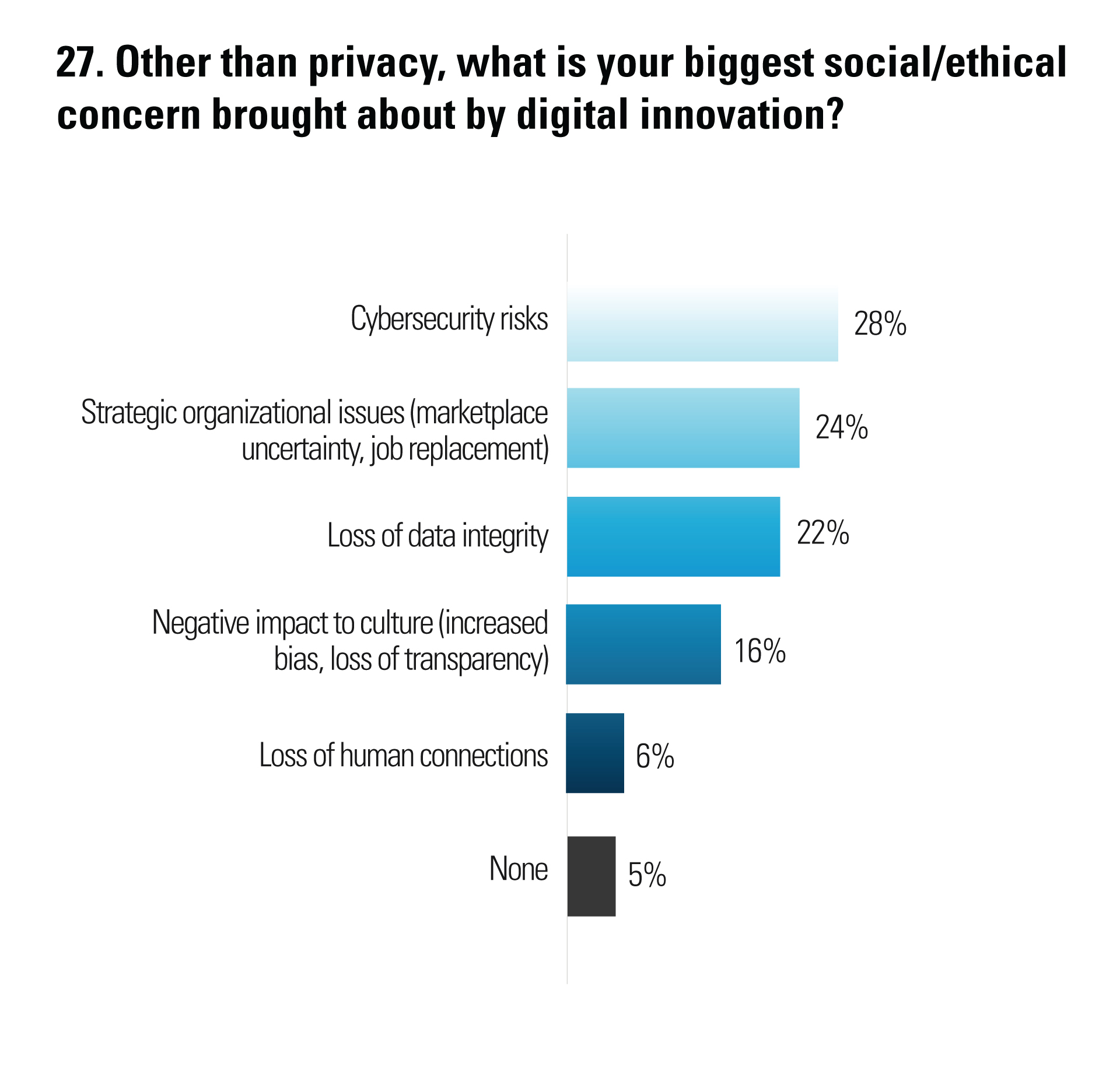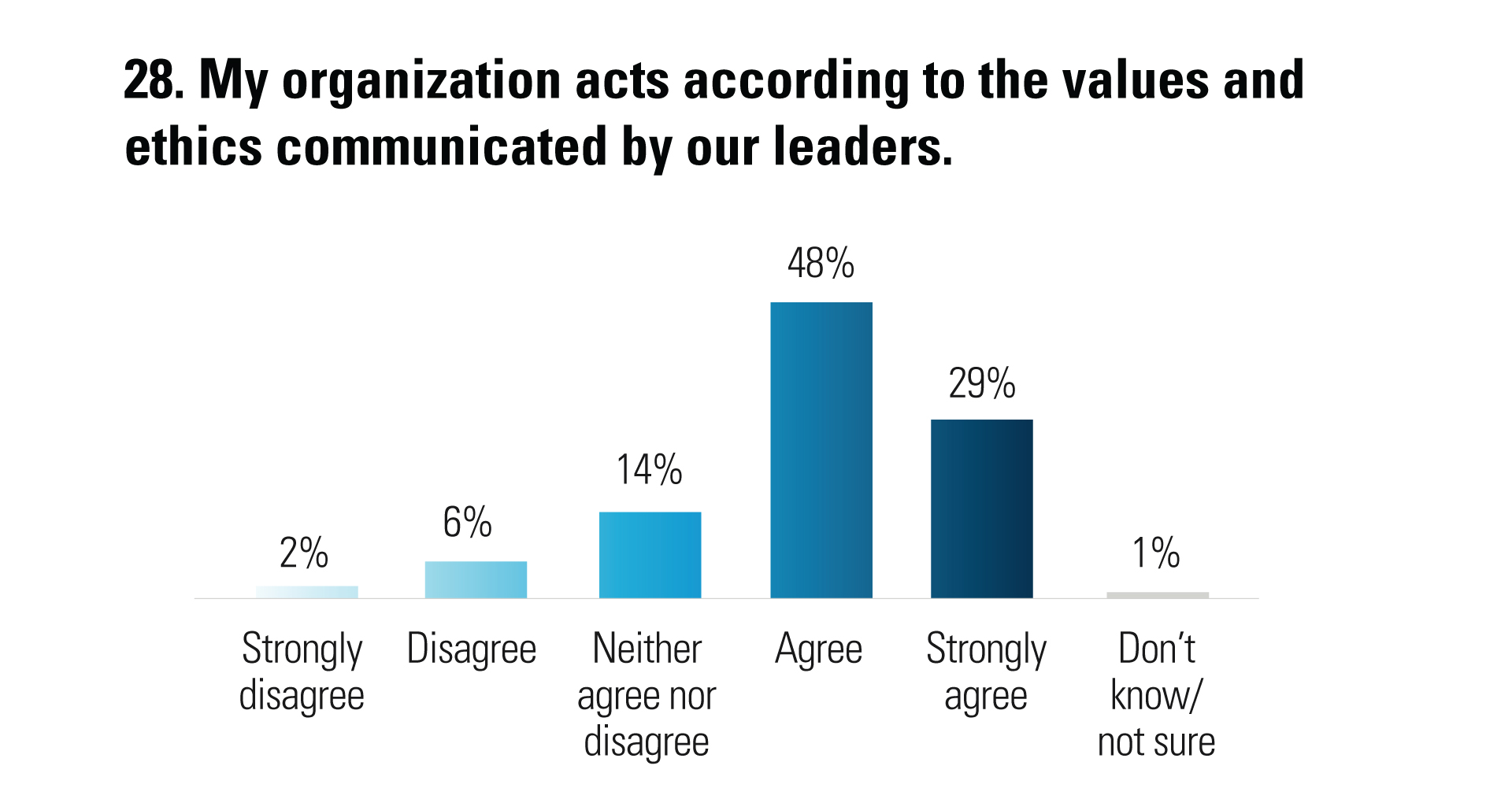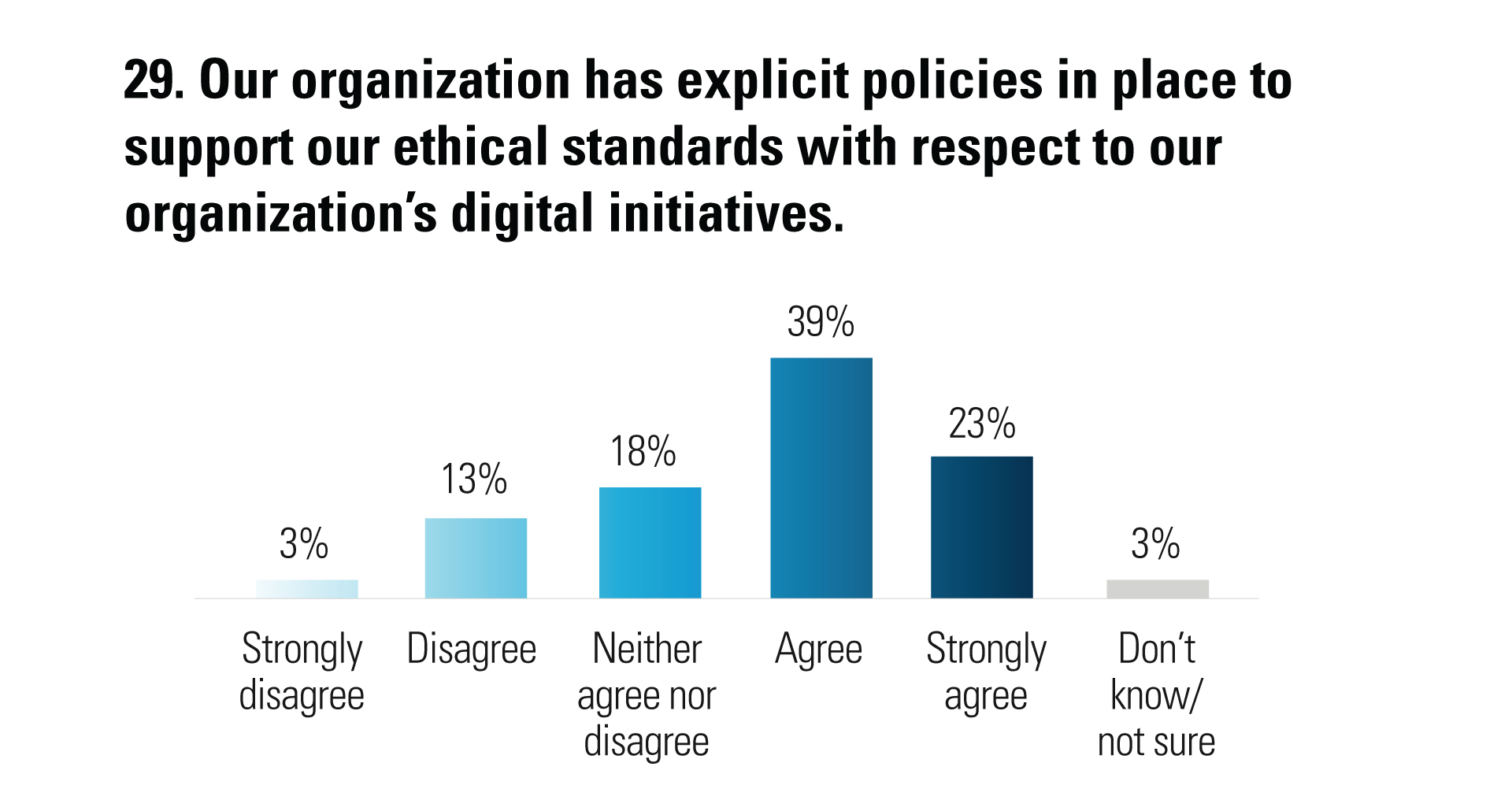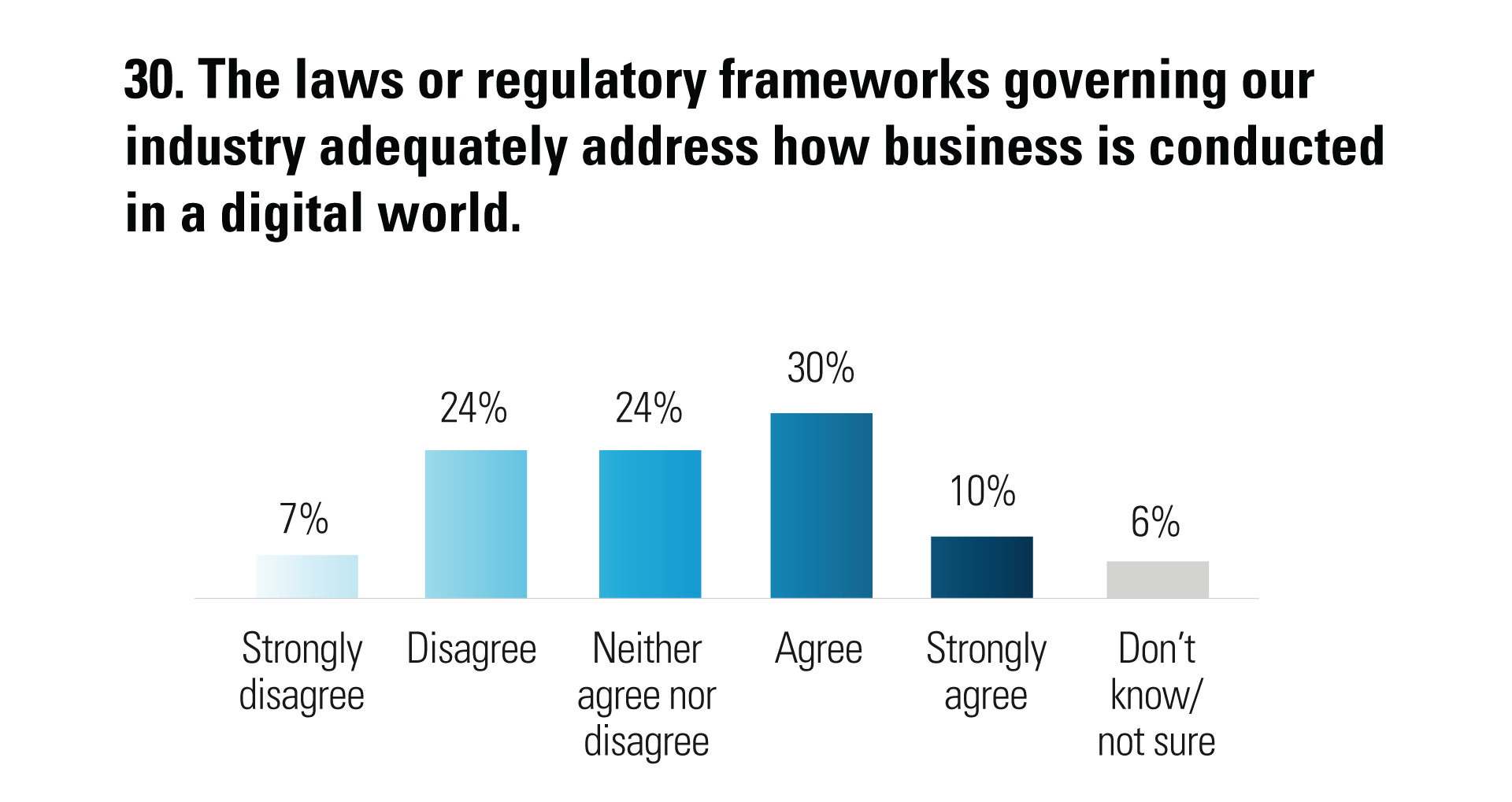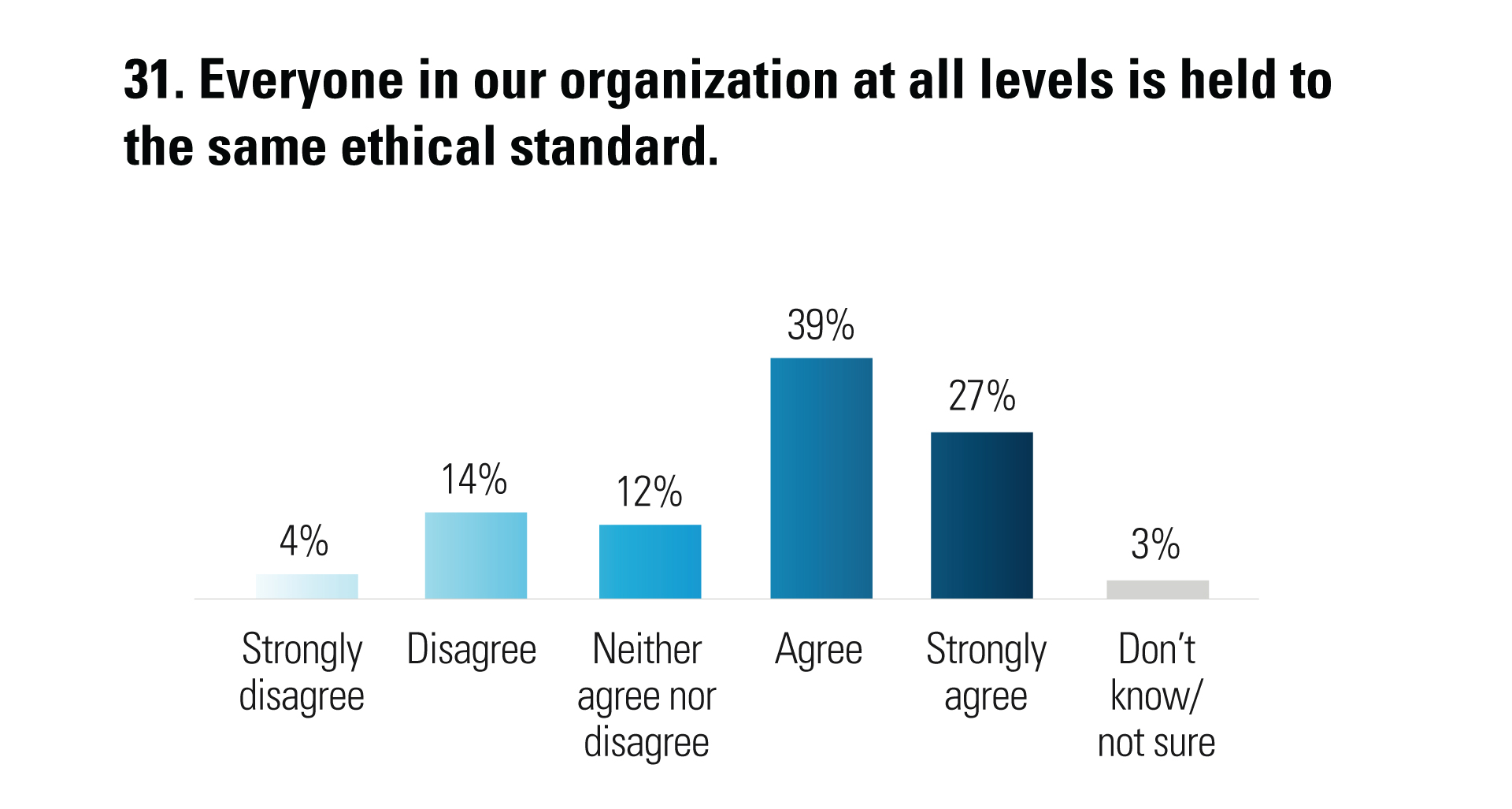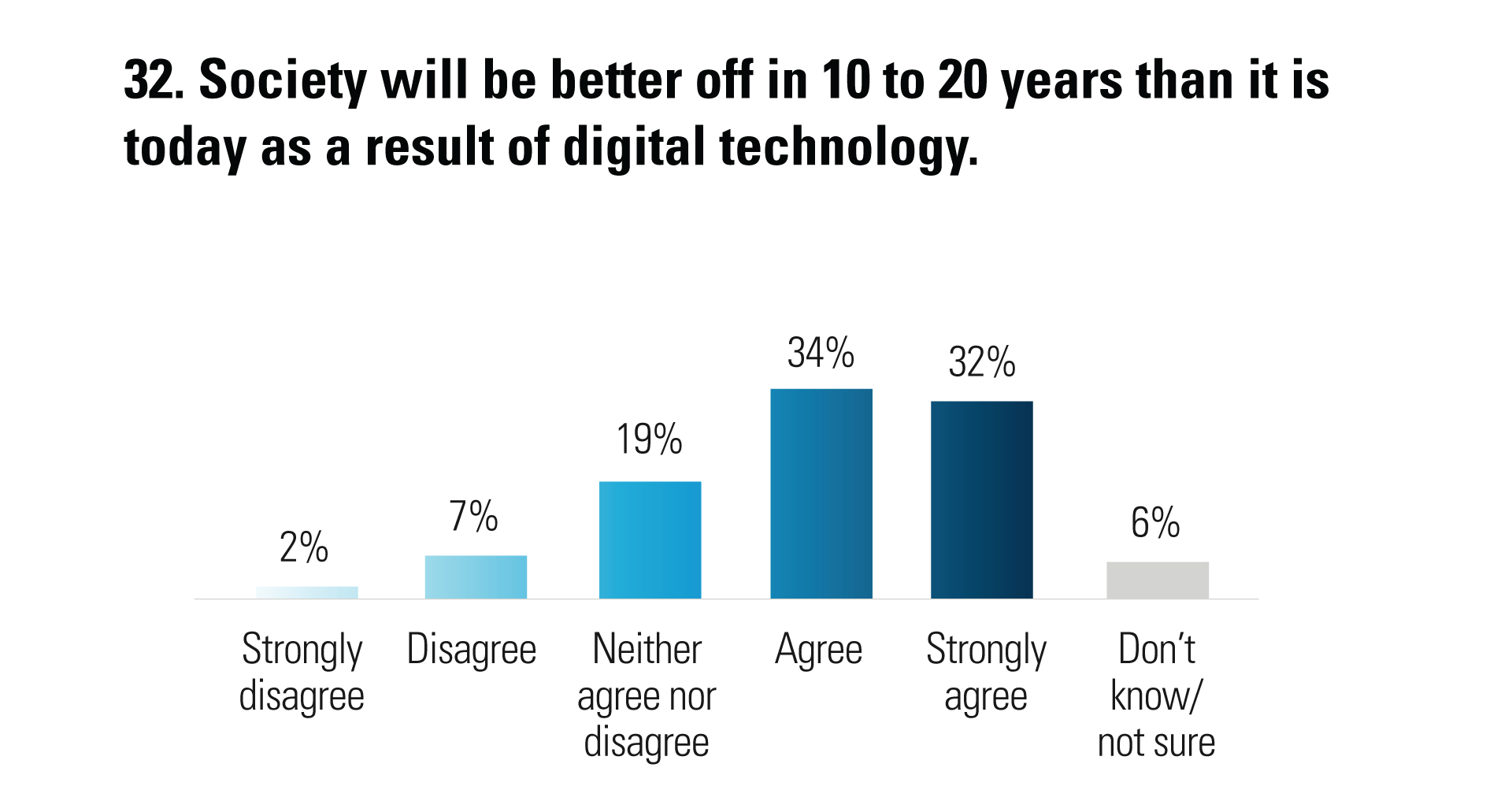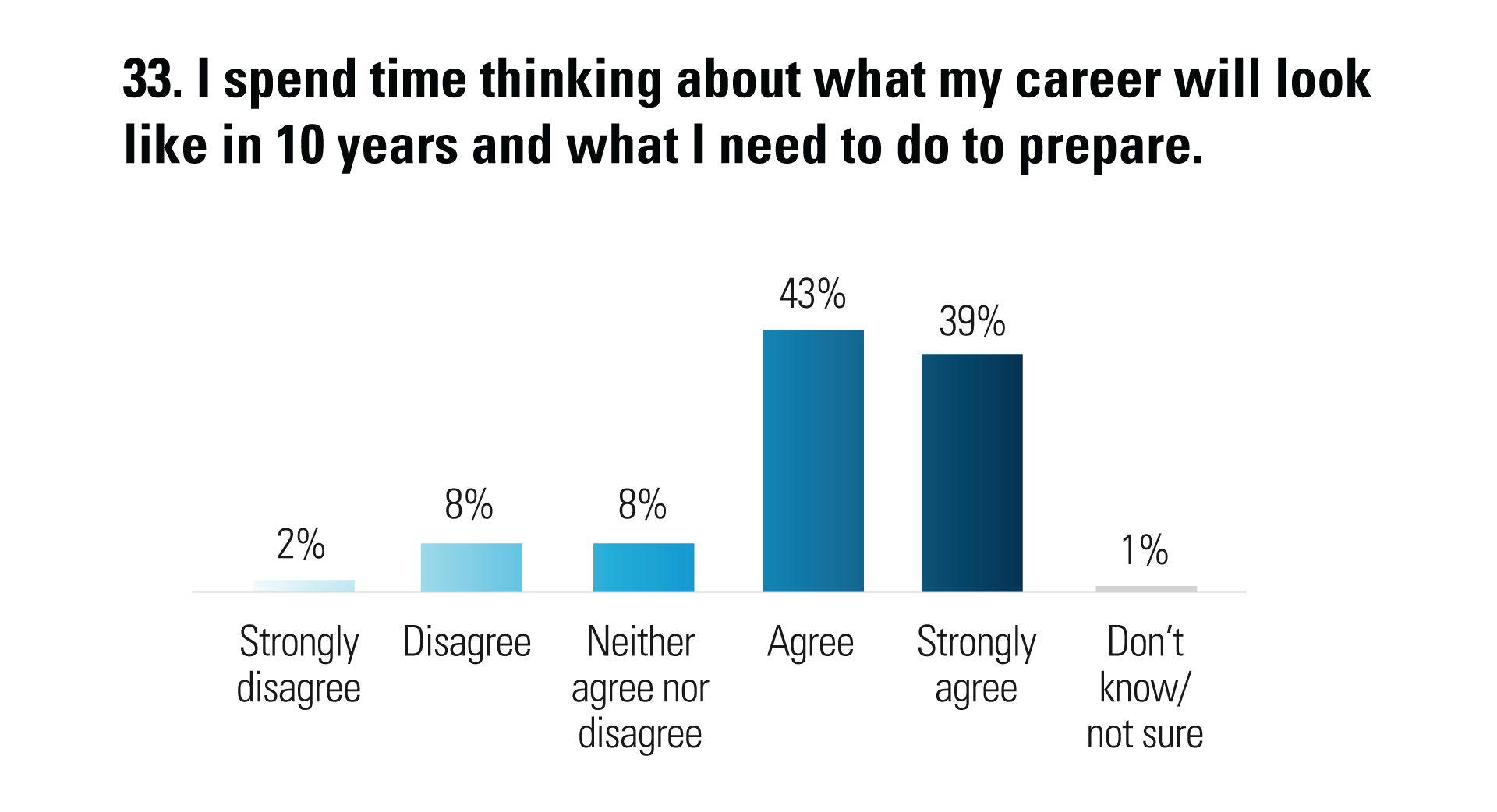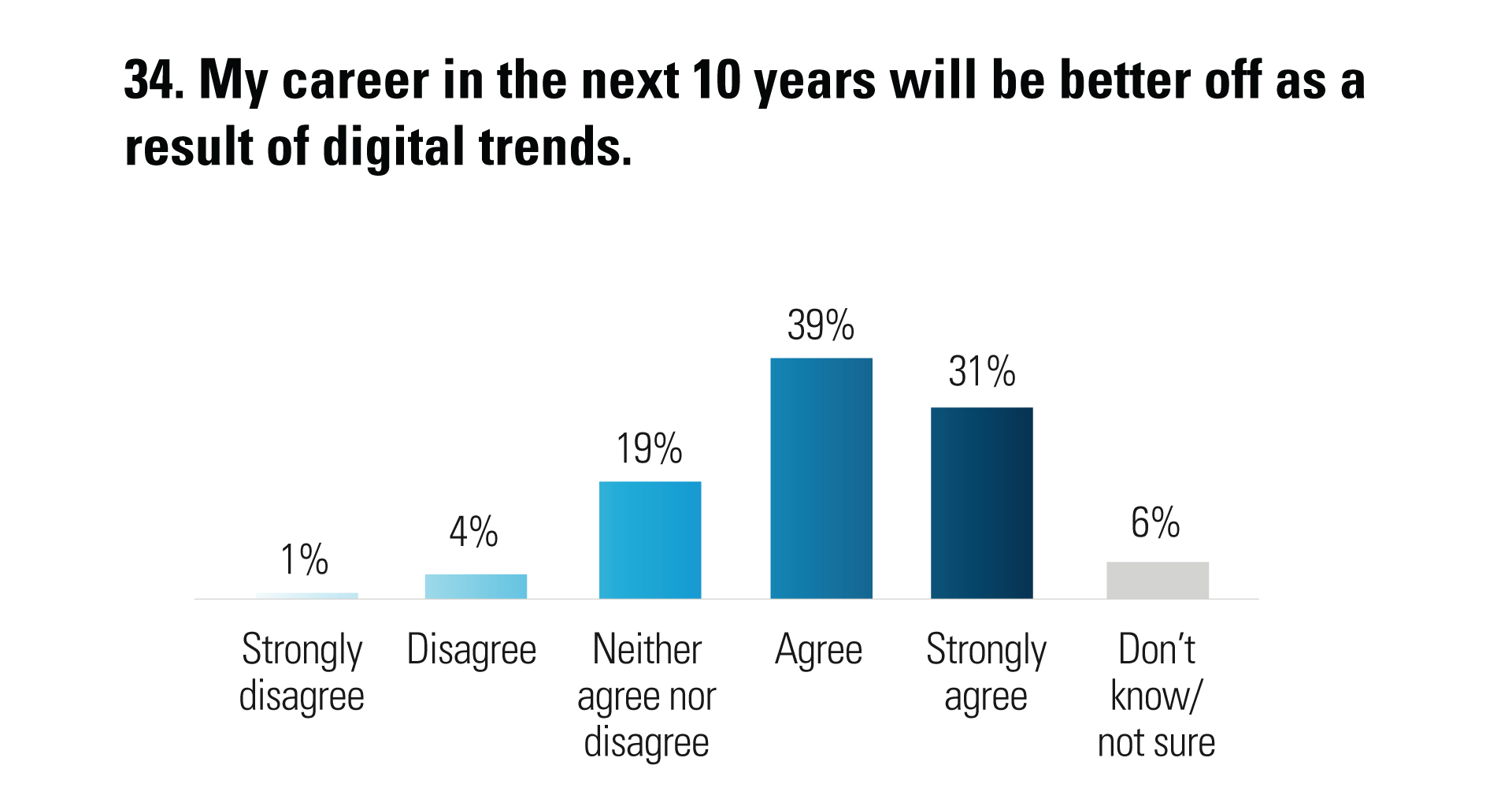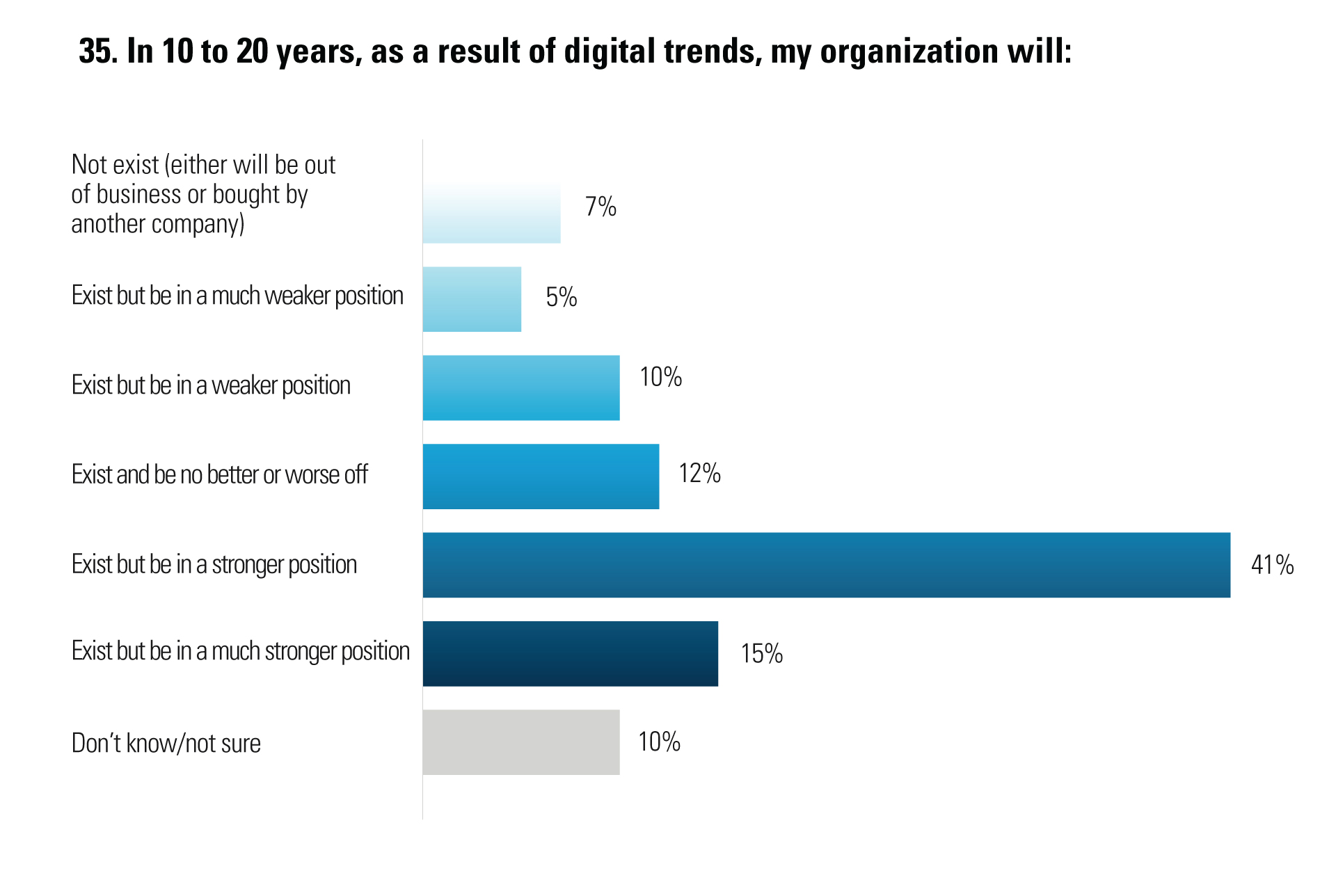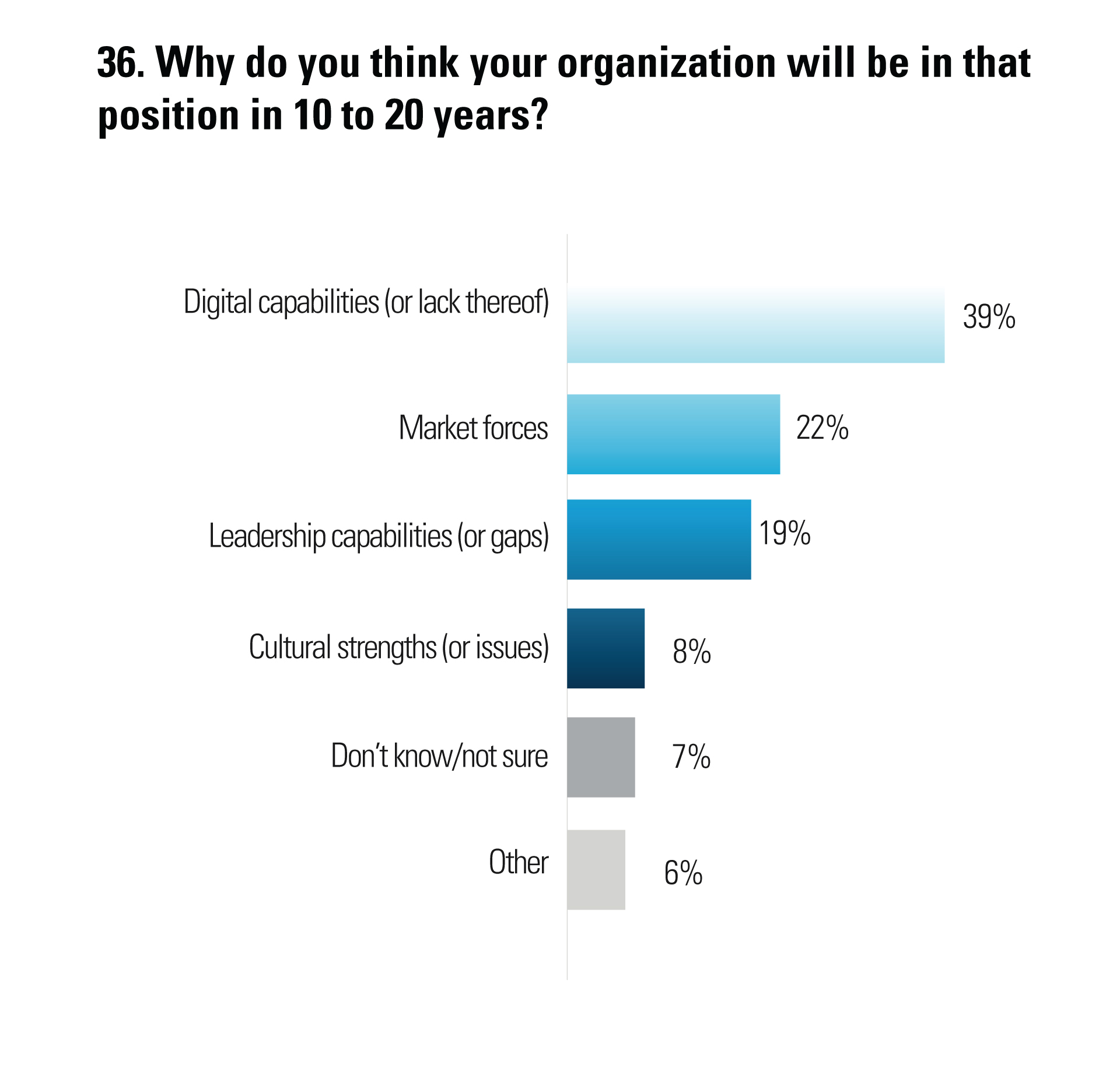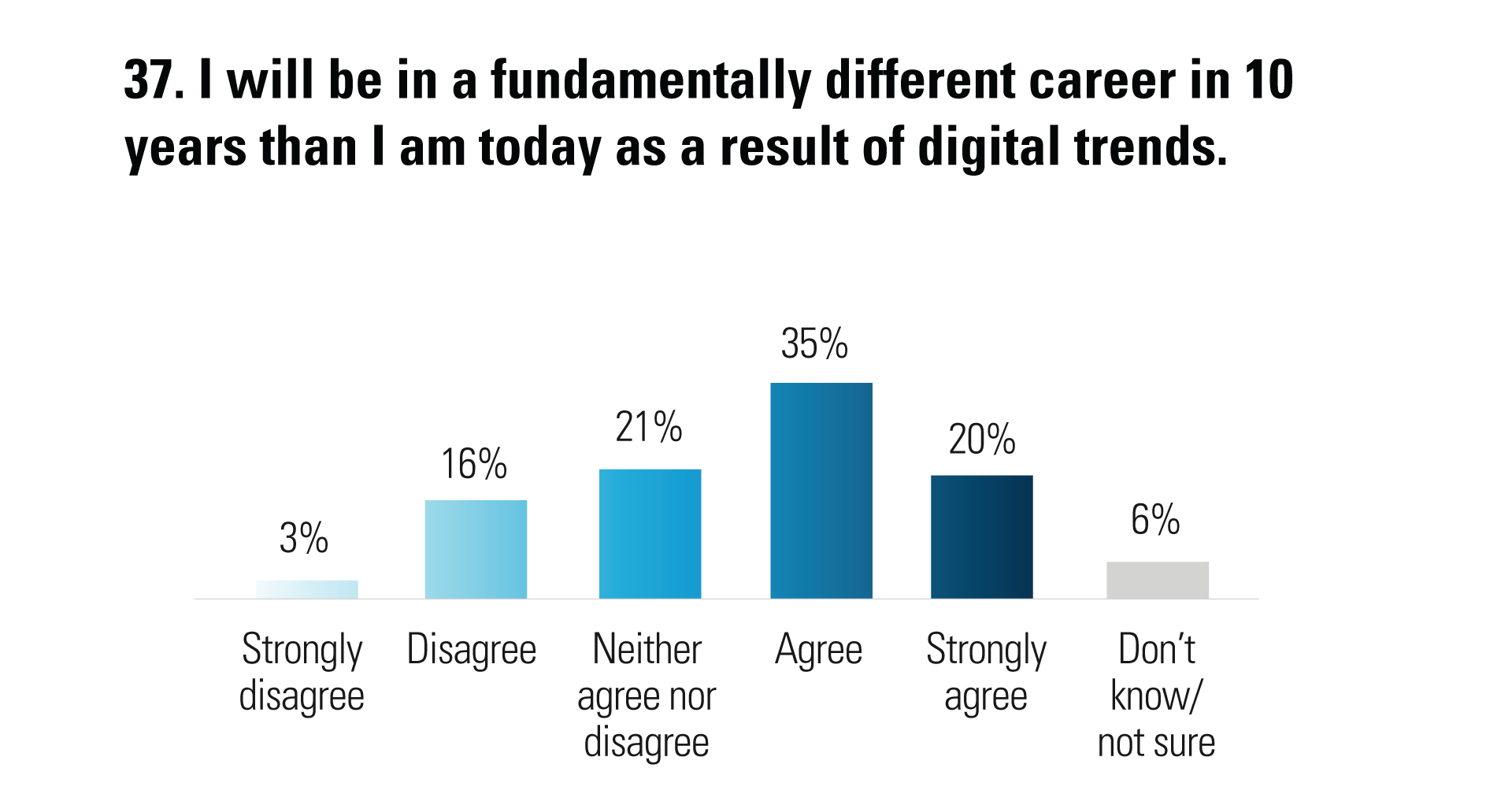Accelerating Digital Innovation Inside and Out
Agile Teams, Ecosystems, and Ethics
Executive Summary
For the past five years, MIT Sloan Management Review and Deloitte1 have investigated digital maturity, focusing on the organizational aspects of digital disruption rather than the technological ones. We’ve examined companies at the early, developing, and maturing stages of digital transformation and have seen increasing signs of separation between more and less mature organizations. This year’s research finds that the gaps can often be explained by a company’s approach to innovation: Digitally maturing companies are not only innovating more, they’re innovating differently.
This innovation is driven in large part by the collaborations established externally through digital ecosystems and internally through cross-functional teams. Both ecosystems and cross-functional teams increase organizational agility. The risk of this increased agility, however, is that it can lead a company’s innovation efforts to outpace its governance policies. It is particularly important, then, that these organizations have strong policies in place regarding the ethics of digital business.
MIT Sloan Management Review and Deloitte’s fifth annual study of digital business is based on a global survey of more than 4,800 managers, executives, and analysts and 14 interviews with executives and thought leaders. The report presents the following findings:
- Digitally maturing companies innovate at far higher rates than their less mature counterparts. Eighty-one percent of respondents from these companies cite innovation as a strength of the organization, compared with only 10% from early-stage companies. Maturing organizations invest more in innovation and constantly drive toward digital improvement in ways that less mature companies do not. Notably, innovation happens throughout digitally maturing enterprises; it isn’t caged in labs or R&D departments. Digitally maturing companies are more likely to participate in digital ecosystems, and their employees are often organized in cross-functional teams.
- Employees of digitally maturing organizations have more latitude to innovate in their jobs — regardless of what those jobs may be. Nearly five times as many survey respondents from maturing companies as from early-stage companies report that their organizations provide them sufficient resources to innovate. This year’s research also finds a strong relationship between a company’s rate of digital innovation and its staffers’ confidence that the organization will be stronger in the future, thanks to digital trends.
- Digitally maturing companies are far more likely than their less mature counterparts to collaborate with external partners. While 80% say their organizations cultivate partnerships with other organizations to facilitate digital innovation, only one-third of early-stage companies do the same. The nature of collaboration also differs depending on maturity level. Digitally maturing organizations tend to form alliances that involve less formal, controlled relationships; they rely more on relational governance and less on detailed contracts. Formal partnerships can still serve a vital role in collaboration and often exist as part of larger business ecosystems.
- Cross-functional teams are another important source of digital innovation. Not only are digitally maturing companies more likely to use cross-functional teams, those teams generally function differently in more mature organizations than in less mature organizations. They’re given greater autonomy, and their members are often evaluated as a unit. Participants on these teams are also more likely to say that their cross-functional work is supported by senior management. For more advanced companies, the organizing principle behind cross-functional teams is shifting from projects toward products.
- Digitally maturing companies are more agile and innovative, but as a result they require greater governance. Organizations need policies that create sturdy guardrails around the increased autonomy their networking strength allows. Digitally maturing companies are more likely to have ethics policies in place to govern digital business. Policies alone, however, are not sufficient. Only 35% of respondents across maturity levels say their company is talking enough about the social and ethical implications of digital business.
- When asked to predict whether their company will be stronger or weaker moving forward, respondents from digitally maturing and early-stage companies show striking differences. The former believe their organizations have the power to adapt to changes wrought by digital disruption and expand their capabilities, while the latter see disruption as a result of market forces they cannot control.

Accelerating Innovation Through Digital Ecosystems
Choosing a health plan can be tough, especially if you’re one of the nearly 60 million seniors receiving Medicare benefits. With thousands of private insurers vying to administer Medicare plans to people older than age 65, many seniors have difficulty identifying an appropriate plan, one that optimizes the right mix of costs, physician access, and health coverage.
Enter California-based Enroll Hero, a startup that calls itself a concierge for Medicare.2 The company’s online tool compares Medicare health insurance plans and offers customized recommendations to its users. Enroll Hero recently joined forces with insurer MetLife to promote its service in seven-plus states. The promotion reached thousands of MetLife customers but did not recommend a single MetLife health plan. The reason: MetLife doesn’t offer a Medicare health plan, and even if it did, Enroll Hero’s mission is to be an unbiased platform. It wouldn’t tout a plan unless it were the right one for that customer.
Why do it, then? For Enroll Hero, the partnership was an opportunity to expand the reach of its service, develop its product, and grow its business. For MetLife’s part, by analyzing customer response rates, it learned more about the interests of one of its most valuable customer segments — those who may be receiving retirement benefits via MetLife.
The unusual collaboration between Enroll Hero and MetLife emerged from a larger effort within MetLife to propel innovation in its Fortune 50 business. In 2018 the insurance company teamed up with Techstars, a Colorado-based organizer of business accelerators, to house an insurance technology accelerator at MetLife’s global technology campus in Cary, North Carolina.
Enroll Hero was one of 10 companies chosen to participate in the accelerator’s inaugural program, officially dubbed the MetLife Digital Accelerator powered by Techstars. The program connected digital insurance-related startups with leaders from MetLife and mentors from Techstars. Along with representatives from the other emerging companies, Enroll Hero cofounders Mark Lee and Bryan Kocol relocated to the tech center of North Carolina for 13 weeks of intensive development and mentorship. Within that time, they were able to create and run a working pilot program, something they had previously expected would take a year.
MetLife has operations in more than 40 countries and total annual revenues of more than $60 billion, but for Greg Baxter, the company’s chief digital officer, working with startups through Techstars is sound strategy. It helps ensure that MetLife can succeed in what Baxter calls the critical phases of innovation: ideation, incubation, and implementation. “Innovation is synonymous with growth,” he notes.
The Techstars-MetLife venture typifies the approach to innovation that digitally maturing companies embrace, according to the research that supports the 2019 MIT Sloan Management Review and Deloitte report on digital business.
In this year’s research, we found that digitally maturing companies are far more likely to encourage digital innovation throughout their enterprises. Yet it isn’t just that these companies do more innovation; they also innovate differently from other companies. Digitally maturing organizations are more inclined to rely on external partnerships for innovation. While organizations at all maturity levels report these partnerships to be vital, those developed by digitally maturing companies are generally organic and fluid rather than carefully contracted and structured. These organizations are also more likely to use cross-functional teams as a mechanism for driving innovation. What’s more, their teams operate differently: They’re offered greater autonomy, are evaluated as a unit, and are given a more supportive environment for success. These internal and external sources of innovation increase digitally maturing companies’ abilities to respond quickly to changes in a competitive environment.
Our research also uncovered risks to that increased agility, which can lead a company’s innovation efforts to outpace its governance policies. With the proper ethical guardrails in place, however, digitally maturing organizations are well-prepared to thrive in the face of digital disruption. Their innovation efforts will be critical as technologies and market conditions continue to evolve. As John Bungert, MetLife’s assistant vice president for innovation, says of his industry, “There’s a lot of effort, energy, and capital flowing into people and companies that are interested in forming new business models, new experiences, and new products around insurance. We can go the way of Bethlehem Steel3 and ignore it, or we can find ways to work together and be the incumbent that delivers all of those new values to our customers.”

Connecting Innovation With Digital Maturity
The companies we surveyed this year are classified into one of three digital maturity categories: early (24%), developing (44%), and maturing (32%). (See Figure 1.) Eighty-seven percent of digitally maturing organizations say they have moved closer to their ideal digital state over the past three years versus 60% of developing companies and 22% of early-stage ones. Our research reveals increasing signs of separation between the more mature and the less mature enterprises, and much of this separation surrounds innovation. Digitally maturing companies innovate at far higher rates than less mature businesses, in large part by cultivating a culture of innovation and providing the resources to support it.
Digitally maturing companies are more successful at driving innovation than their less mature counterparts. (See Figure 2.) Eighty-one percent of respondents from maturing companies cite innovation as a strength of the organization, compared with 36% from developing outfits and only 10% from early-stage companies. They invest more in innovation, too, with executives and managers from 74% of maturing companies saying their organizations provide sufficient resources for innovation versus 39% of developing companies and 15% of early-stagers.
Maturing companies also allocate time to enable their employees to innovate. Eighty-six percent of respondents from digitally maturing companies say that 10% or more of their time at work involves the opportunity to experiment or innovate. At these companies, continual improvement is the new normal, and staying at the forefront of digital innovation demands repeated self-reinvention. By contrast, more than 40% of early-stage respondents report that less than 10% of their time, or no time at all, involves experimenting or innovating. (See Figure 3.)
In addition, digitally maturing enterprises are far more likely than their less mature counterparts to encourage innovation by forming vital digital partnerships with external partners and supporting the internal development of cross-functional teams.

Ecosystems: A Fertile Source of Innovation
Partnerships with external organizations are a key source of digital innovation, especially for digitally maturing companies. (See Figure 4.) At digitally maturing companies, 80% of respondents say their organization is cultivating innovation via partnerships. At developing organizations, that number drops to 59%, and at early-stage organizations it falls further still to 33%. Digitally maturing companies are (thus) more than twice as likely to work with external organizations to innovate, compared with the least digitally mature businesses.
This gap does not exist because less mature companies fail to recognize the importance of partnerships to innovation. Nearly 80% of respondents across all maturity groups consider partnerships vital to their innovation efforts. Of course, as any frustrated dieter can tell you, believing something and acting on that belief are two different things. Early-stage companies, in particular, are less willing to commit resources to innovation. As we saw in our opening example, creating an innovation accelerator requires significant executive time commitments and resources for scaling successful innovation projects with external partners.
Digitally maturing companies also take a different approach to their partnerships, compared with their less mature counterparts. They use partnerships to support multiple dimensions of the innovation process and emphasize wide-ranging, capability-building ecosystems that address both short-term and long-term objectives.
Part of the reason for this emphasis, says Youngjin Yoo, the Elizabeth M. and William C. Treuhaft Professor of Entrepreneurship and professor of information systems at the Weatherhead School of Management, Case Western Reserve University in Cleveland, is that ecosystems enable organizations to operate more flexibly, providing access to more collaborators and potential innovations.
The term ecosystem is rooted in ecology and the work of early 20th-century botanist Arthur Tansley. It originally denoted a community of biological, chemical, and physical components that function as a unit; a beaver pond is an oft-used example. In the business context, it has come to mean a group of companies that cooperate to achieve shared goals, with or without formal ties. While a digital ecosystem4 can include traditional partnerships and consortia, the term covers a wide array of relationships with external organizations and people. These include academic institutions, government entities, nonprofits, startups, customers, and even competitors (to name a few).
Our interviews with corporate executives revealed several ways that ecosystems feed innovation. Two stand out. Integrating platform companies is one. Platform companies often end up as the hubs in innovation ecosystems, notes Geoffrey Parker, professor of engineering at Dartmouth College and coauthor of Platform Revolution.5 Platform companies, like Amazon and PayPal, are at least partly “open, and they often have default contracts that allow anybody to participate,” says Parker. That openness attracts “value-added partners that you don’t have to pre-identify and you don’t necessarily have to vet.” In contrast, old-school partnerships typically imply “a lot of due diligence, potentially contracts, cross-ownership, and a long-term relationship.” Dave Otten, CEO and founder of online video software platform JW Player, adds: “A platform can be part of the ecosystem. And a platform can enable a broader ecosystem. If you look at a platform company like YouTube, they are also a big part of the video ecosystem.”
Ecosystems also contribute to innovation through their collective access to diverse customers. In online video software development and distribution, Otten says, technologies like JW Player come together with advertising technology companies and advertising partnerships. All of them, along with the audiences they gather from across the broader web, form a collective ecosystem. Their combined understanding of audience feedback and behavior can play a critical role in the innovation process.
Distinct ecosystems contribute to different steps in the innovation process, especially for platform companies. On the basis of his research on digital platforms, Yoo observes that platforms comprise multiple layers, each of which can be managed by different participants. Accordingly, value creation in a platform is not linear: Organizations choose to participate in one or more layers of activity, providing complementary resources where appropriate or allowing others to provide them (car owners supply the cars in Uber’s ride-sharing platform, for example). Layers can involve a variety of offerings, including content, services, networks, or devices. “You could say,” Yoo adds, “that the company at the center of an ecosystem builds the beaver dam, and that, in turn, creates a pond that attracts other creatures, who also thrive there. The key strategic question is which strategic layer will the platform company control and which ones will it open to others?”
Working with external partners presents difficulties, even to digitally maturing companies. We asked survey respondents to share their biggest challenges with leveraging partnerships and networks to increase innovation. Nearly half (46%) of all respondents cite challenges related to creating a collaborative culture and to aligning goals across an ecosystem. These results are consistent regardless of maturity level. When it comes to culture, companies struggle with employees and leaders who aren’t naturally inclined to collaborate with external partners.
This problem deepens when trying to develop goals that are acceptable to all parties within the network. JW Player’s Otten acknowledges the challenge but advises companies to “balance the need to hold on to the core of your culture, while letting go of the things you need to in order to grow up.” When companies are navigating these issues, Amy Smith, senior vice president of product at Techstars, notes that “executive leadership is really, really important.” Leaders ultimately create credibility around enterprise strategy that facilitates participation in the ecosystem.

Buying In to Cross-Functional Teams
Ecosystems are critical to digitally maturing companies’ externally focused innovation activities. Internally, digitally maturing companies depend on cross-functional teams to advance their innovation efforts. Eighty-three percent of digitally maturing companies say they use cross-functional teams, compared with 71% of developing companies and 55% of early-stage outfits.
The differences among maturity groups are even more pronounced when respondents are asked how they deploy cross-functional teams. (See Figure 5.) Executives and managers at digitally maturing companies, compared with developing and early-stage ones, say these teams are more likely to have considerable autonomy regarding how to accomplish goals (69% versus 53% and 38%, respectively), to be evaluated as a group (54% versus 33% and 20%), and to have their senior leaders create a supportive environment for their teams (73% versus 48% and 29%). These distinctive aspects of cross-functional teams found in digitally maturing companies echo the flexible, organic aspects of the ecosystems we observed in external partnerships, and they likely drive innovation in similar ways.
A cross-functional team starts with people from multiple departments. Rather than answering to whichever line manager they’re officially assigned to, they might be accountable to a project manager or a corporate innovation executive. What are the benefits of cross-functional teams? Survey respondents cite enhanced access to resources, such as diverse perspectives, broader skill sets, and new ideas, as the most important one.
Operating via cross-functional teams may pose new kinds of management challenges, however. More than half of respondents cite problems with team alignment and an unsupportive culture as the biggest barriers faced by cross-functional teams. To overcome these challenges, companies must secure buy-in via clear and copious communication with employees, says Matt Schuyler, chief human resources officer at Hilton, the McLean, Virginia-based global hospitality company. For Hilton’s part, he says, “we see great benefit to our business and our culture when our team members work cross-functionally, so we spend a lot of time challenging our teams to think outside of their own subject-matter expertise. To encourage a more collaborative mindset, we invest time reminding them that you can have it all here and that communicating outside your silo is, in some ways, more important than within your silo.”
Michael Arena, former chief talent officer at General Motors and author of Adaptive Space: How GM and Other Companies Are Positively Disrupting Themselves and Transforming Into Agile Organizations, cautions that, while cross-functional teams are an important source of innovation at his former company and other digitally maturing ones, they’re not a panacea. Innovation is a process, and it occurs in stages. “For organizations to be adaptive,” he says, “the very first thing we need to do, especially as we’re talking about org design and practices, is to ditch the one-size-fits-all mindset.”
Arena studies organizational network analysis and the impact of organizational design on innovation. He notes that cross-functional teams may be brought together to address one aspect of innovation (say, ideation), but team members may have a different role when it comes to other aspects of the innovation process (say, diffusion). “It could be that for six weeks we’re pulling people together for a specific purpose,” Arena explains. “They’ve got these milestones, and for six weeks they’re dedicated to getting something across the finish line. And that’s the design for that six-week interval. Then those team members are going back to their steady-state jobs where we’re going to ask them to help diffuse this out across the broader organization.”
“When you’re talking about diffusion of new ideas, having proximity is absolutely essential. Passion spreads face-to-face.”
– Michael Arena, former chief talent officer, General Motors; author, Adaptive Space: How GM and Other Companies Are Positively Disrupting Themselves and Transforming Into Agile Organizations
As an example of the benefits of designing teams for both ideation and diffusion of ideas, Arena offers up Motorola’s invention of the Razr mobile phone.6 The Razr was a stylish, best-selling device in the years just before smartphones. Motorola, a mobile-phone pioneer, had been pushing for a breakthrough but had faltered until assigning a cross-functional team to the challenge. “They actually forced this arrangement in their innovation lab in Chicago where they brought the individual development groups — design was there, engineering was there, marketing was there — and they put them all in the room together,” Arena says. “They kept them in their clusters, so they could do the deep-dive work and develop new concepts. But then they could synchronize with the broader functions in the room much more in real time so that they were testing and diffusing ideas and responding based on the feedback they were getting.” Cross-functional teams matter a lot in discovery, he adds. “It matters even more in diffusion.”
One question companies wrestle with is whether to colocate cross-functional team members or to let them interact virtually. The project’s stage can be a deciding factor, with colocation less critical, in Arena’s view, during the discovery phase. But “when you’re talking about diffusion of new ideas, having proximity is absolutely essential,” he says. “Passion spreads face-to-face.”

Learning Cheap and Fast
CarMax, the Richmond, Virginia-based auto retailer, has embraced cross-functional teams so thoroughly that its technology organization has basically dispensed with traditional planning. Instead, CarMax expects innovations to bubble up through its product teams, says Shamim Mohammad, the company’s chief information and technology officer (CITO) and a senior vice president.
“If you think about how fast technology is changing and how fast customer expectations are changing, to deliver what the customers are looking for, you have to organize as cross-functional teams,” he says. “No single-function team can really deliver at the speed the customer is expecting.”
CarMax’s product teams are small — typically seven to nine people — and their members are colocated. A team can pull in staffers from any pertinent function or department, but every team must include a product manager, a lead engineer or developer, and a user-experience expert, roles Mohammad considers nonnegotiable.
CarMax executives give the teams goals but not elaborate instructions. As Mohammad describes it, “We tell them what to achieve but not how.” Progress toward goals is closely monitored, with the teams expected to give 10- to 15-minute presentations every two weeks in an open-house format. The presentations address how the teams are tracking against their goals, what experiments they’ve done, what worked or didn’t work, and what they’ve learned. Anyone at CarMax can attend the presentations, and top company executives often do so.
“We have this mindset of learn cheap and learn fast,” Mohammad explains. “Because we are conducting two-week sprints, it’s easier for the teams to conduct many experiments without adding significant risk for the business. They are encouraged to take smaller risks, learn from them, and adapt quickly.”
Team members are evaluated both as part of their teams and as individuals. They’re expected to know and monitor their key performance indicators. Teams are accountable to CarMax’s chief marketing officer, CITO (Mohammad), and chief operating officer.7
Mohammad says the cross-functional teams were critical to the December 2018 launch of CarMax’s omni-channel experience8 in Atlanta, a new approach to buying and selling cars that the retailer intends to roll out nationwide: “Basically, if you’re a customer, you can buy a car from anywhere in the Atlanta market and have the car delivered to you at home or at your workplace.” If customers wish, they can now complete an entire purchase from home, with the test-drive delivered to their driveway. With the arrival of online-only competitors like Carvana and Vroom and with more consumer choice in transportation options (Uber, Lyft, Zipcar, and car subscription services), CarMax’s continued growth depends on the company continuously innovating its offerings.
Its embrace of cross-functional teams has changed CarMax’s managerial mindset around technology planning. Executives and managers no longer think and talk in terms of projects and project budgets. Rather than asking, “Hey, do we need X million dollars?” notes Mohammad, they say, “How many product teams are you going to fund next year and what are our business outcome goals?” He considers that a game changer for the company: “We moved away from this annual project-based kind of mindset to a product-based mindset, where the product teams are delivering results, and we’re tweaking them along the way.”

Loose Coupling Versus Tight Controls
Organizations that excel at external collaboration and cross-functional teaming embrace organizational theorist Karl Weick’s notion of “loosely coupled systems.” As Weick explained in a much-cited 1976 article in Administrative Science Quarterly, a loosely coupled organization eschews hierarchies and excels at adaptation.9 “If all of the elements in a large system are loosely coupled to one another, then any one element can adjust to and modify a local unique contingency without affecting the whole system,” he wrote. “These local adaptations can be swift, relatively economical, and substantial.”
Traditional corporate teams are tightly coupled and cleanly divided. Staffers in, say, information technology work closely together and let their technical expertise guide their work. When they need to tap into the knowledge of other departments, they do so through formal channels, asking their manager to confer with his or her counterpart in, for example, accounting or marketing. A cross-functional team, by contrast, is loosely coupled in that it is composed of people from multiple functional areas, giving them the freedom to work across traditional organizational boundaries.
Digitally maturing companies embrace loosely coupled relationships, systems, and processes to support their digital innovation.
Digitally maturing companies embrace loosely coupled relationships, systems, and processes to support their digital innovation. They give greater autonomy to their cross-functional teams and individual units, which have the freedom to respond quickly to shifts in their market environment.
Their interactions with external partners are governed more by relationships than by detailed contracts. These stronger relationships enable the cross-pollination of skill sets and mindsets. This, in turn, allows novel solutions to arise more often and more quickly than in tightly controlled systems, which means the overall system is less vulnerable to the breakdown of any one part. Increased autonomy does require different forms of governance. It demands sturdy ethical guardrails to ensure that the autonomous units serve the company’s overall goals and protect its reputation.

Ethical Guardrails Enable Agility
“People think brakes are to make a car slow down when, in fact, the purpose of brakes is that they enable cars to go fast. The same is true with organizational ethics. If you have those in place, the organization can move faster, because you are confident in the mechanisms that will keep you from crashing if you run into something unexpected.”
— Greg Baxter, chief digital officer, MetLife
With its biweekly open-house-style meetings attended by senior leadership, CarMax keeps close tabs on its cross-functional teams. That’s the sort of creative governance that digitally maturing companies often employ. Given their loosely coupled way of doing business, they can’t rely on command-and-control structures in which team members don’t act until they’ve received clearance from someone higher up. As Mohammad notes, increased autonomy means increased freedom to experiment and encourages an entrepreneurial culture.
Companies that encourage autonomy and experimentation are faced with a greater likelihood of making mistakes — and not just practical ones. Ethical errors can boil up, too. Ethical lapses can come in many different forms. For this reason, a strong culture of integrity is a critical companion for the cross-functional teams at CarMax. According to its website, the company’s purpose is to drive integrity by being honest and transparent in every interaction. Mohammad emphasizes that “integrity is core to everything at CarMax.” As you give teams more autonomy, it is imperative that they also understand the company’s values to guide that autonomy.
Respondents to our survey mention a number of social and ethical concerns brought about by digital innovation. When asked about their biggest concerns, apart from privacy, they most often cite cybersecurity or digital crime, job replacement, and the unethical use of data.
A commitment to greater flexibility, in the service of innovation, brings with it the need for sturdy ethical guardrails around increased employee autonomy. If the benefit of loose coupling is greater agility, its drawback is a loss of control. Executives and managers therefore must strive to foresee risks and equip employees so that they know how to respond — or at least know to slow down and seek help — when ethical questions arise, as they surely will.
That might explain why digitally maturing companies are more likely to have adopted policies to support their organizations’ ethical standards with regard to digital initiatives. This year’s survey found that 76% of them had such policies in place, compared with 62% of developing companies and 43% of early-stage ones. (See Figure 8.)
A common mistake managers make vis-à-vis digital ethics is assuming that their companies’ legacy policies are adequate. After all, nearly every company, once it has grown beyond the startup stage, has some sort of employee handbook that at least begins to spell out expectations regarding proper and improper employee behavior. More mature organizations might have even taken the time to compose an overarching values statement and craft ethics policies.
But the mere existence of guidelines doesn’t guarantee that those guidelines are up to the task of steering digital innovators through the ethical dilemmas they might face, says Michael Santoro, a management professor at Santa Clara University’s Leavey School of Business. Digital ethics is one of Santoro’s fields of expertise, and he’s often asked to consult with companies on their ethical standards.
He has found what he calls “a very serious, systemic hardware problem.” Often, a company’s code of conduct will have been “written 10, 15, or 20 years ago — even for tech companies — and hasn’t been revisited since.” At times, that code will be more remarkable for what’s missing than for what’s addressed. Santoro says he’ll often notice “a lack of a statement in the code of conduct about all of the business areas that a company is working in, a lack of board responsibility for any of the principles that the company has avowed to uphold, and a lack of channels to report up into the board.”
His advice for digital innovators thus begins with the suggestion that they consider their hardware needs from the beginning, instead of waiting until trouble arrives. Ethical considerations should be part of product design “so that you’re designing your product with a consciousness about the impact that it’s going to have on society,” he says.
The sort of approach Santoro recommends has been adopted by the identity verification and fraud protection company Socure as it has built out its product suite. Socure’s target market, financial services companies, have robust risk systems in place to identify biases in the way they offer their products to the public, says Johnny Ayers, the company’s cofounder and senior vice president. (Lending bias is closely regulated, specifically with Regulation B from the Equal Credit Opportunity Act from the Consumer Financial Protection Bureau.10) They’re extraordinarily careful to ensure that their credit-reviewing and granting models don’t contain biases related to “age and gender and race and socioeconomic status,” Ayers says. As a result, Socure had to be equally mindful of these issues as it created its services, with each Socure team member being a consumer themselves. Ayers adds: “Even when we were only 10 people, we were building a lot of very specific controls into how we build and train models, knowing that, when you sit down with any number of the major credit issuers, their expectation is that you have stress-tested any of your models that you’re proposing to ensure that none of the aforementioned biases are implicit in your models.”
Santoro sees the potential for applying financial-industry thinking to other fields. When he’s called in to help a company solve a problem, he says, “what I’m usually doing is designing something that looks like Sarbanes-Oxley,” the 2002 law enacted in the wake of financial frauds that governs corporate record keeping and disclosure.
Making Ethics Fundamental
In March 2019, on the occasion of the World Wide Web’s 30th birthday, Sir Tim Berners-Lee, the inventor of the web, urged businesses to make ethical considerations fundamental to their product design. “Companies must do more to ensure their pursuit of short-term profit is not at the expense of human rights, democracy, scientific fact, or public safety,” he said. “Platforms and products must be designed with privacy, diversity, and security in mind.”11
The mere existence of guidelines doesn’t guarantee that those guidelines are up to the task of steering digital innovators through the ethical dilemmas they might face.
Most businesses, even digitally maturing ones, are falling down in this regard — and by their own admission. Digital maturity aside, only 35% of all respondents to this year’s survey say that their organization’s leaders spend enough time thinking about and communicating the impact of their digital initiatives on society. Respondents from digitally maturing companies are the most likely to say their leaders are doing enough, but even then, the percentage barely breaks into a majority, at 57%. Only 16% of respondents from early-stage companies answer this question affirmatively.
Less than half (46%) of CEOs say their company is spending enough time on ethical matters — a notable figure, considering that they have the most control over their company’s agendas. For CIOs and chief digital officers, that number drops to nearly 40%, and for directors/board members, to about 32%.
Only 35% of respondents to this year’s survey say that their organization’s leaders spend enough time thinking about and communicating the impact of their digital initiatives on society.
Still, some digitally maturing companies have begun incorporating ethics into their operations and leadership structures. In 2016, for example, software company Salesforce created the position of chief equality officer, filled by Tony Prophet, to address the shortage of diversity in Silicon Valley.12 Then, earlier this year, it added its first chief ethical and humane use officer, Paula Goldman, who, according to the company website, is charged with ensuring that Salesforce “drives positive social change and benefits humanity.”13 One executive we spoke to commented on the importance of thinking about a company’s broader obligations and impact, noting discussion of topics such as equality, trust, and the ethical use of technology at the 2019 World Economic Forum Annual Meeting in Davos, Switzerland.14 These issues are becoming particularly critical in today’s environment, as companies are increasingly being held accountable not only for their own actions and those of their employees but also for the actions of those with whom they do business.
It’s unlikely, however, that well-considered policies and high-profile posts are enough. If innovative teams have more autonomy and are expected to experiment, they’ll encounter situations where the guidelines don’t apply because the problem at hand hasn’t been envisioned. Who, for instance, could have imagined the ethical quandaries social media would present? Even dating sites and their algorithms can toss up unexpected moral dilemmas, such as how much, if any, A/B testing should be allowed with people’s profiles and date recommendations. It’s one thing to manipulate people’s choices of headphones, yet another to toy with their chances of finding love and happiness.
Berners-Lee’s stipulation for the Contract for the Web, a new effort among businesses, governments, and citizens to ensure that the web serves the public good, applies to any enterprise’s approach to thinking about ethics: “It must be clear enough to act as a guiding star for the way forward but flexible enough to adapt to the rapid pace of change in technology.”15
When problems do arise, a company’s ethical muscles will be tested, and if they haven’t been exercised, they may fatigue too fast. “You can have the best ethical code of conduct in the world, and you can nail it to the wall as the employees walk in,” Santoro says. “But if you don’t have an ethical culture to support it, you’ve really got not very much.” Enron, after all, had a values statement.16
Ethics often seem like the part that’s bolted on after the corporate engine has been built and tuned, like the speed limiters applied to some school buses and long-haul trucks. But, as MetLife’s Baxter notes, ethical norms and policies are not add-ons but an integral part of a digitally maturing company, akin to an automobile’s brakes.

How to Begin
Our fifth annual study of digital business reveals that a company’s approach to innovation has a decisive impact on its progress toward full digital transformation. Now more than ever, a company’s belief in the importance of innovation is not sufficient; taking concrete steps to drive innovation is what matters.
Our survey of more than 4,800 managers, executives, and analysts and our interviews with 14 executives and thought leaders establish that the most digitally mature enterprises have innovation efforts that reach both outside and inside their organizations. They encourage flexibility but develop ethical standards to guide them through the unanticipated dilemmas created by the loosening of hierarchical structures. To achieve digital maturity, consider the following:
Look beyond your organization to drive innovation.
Digitally maturing companies identify opportunities to foster and participate in innovative ecosystems, which are less formal and more flexible than traditional partnerships. Some of these ecosystems are platform- and product-driven, like Amazon, while others provide a way to tap into new innovations or market opportunities, like the MetLife-Techstars accelerator described in the introduction. Because ecosystems involve less control than traditional partnerships, managers must communicate clear objectives to employees and create governance practices to guide participation.
Reassess how your company cultivates and supports cross-functional teams.
Cross-functional teams are an integral part of the innovation efforts of digitally maturing organizations. They function best when managers pair team autonomy with clear team objectives that are understood both by the members and by the stakeholders working with them. Cross-functional teams ought to be evaluated against performance metrics at the team and individual levels. Of course, not all teams in an organization need to be cross-functional. Build up your use of cross-functional teams strategically in instances where increased innovation and agility can add significant value to the organization’s business model. See, for example, CarMax’s use of teams to drive new business opportunities.
Loosen formal hierarchies. Let teams explore and occasionally fail. Learn fast, and correct as you go.
The biweekly cross-functional team meetings at CarMax exemplify how a company can foster an innovation mindset centered around products rather than projects. The involvement of top executives across departments has helped leaders cultivate a supportive environment. A similar move is underway at another software-as-a-service company we spoke with. The company has been shifting from project-aligned to product-aligned funding. Traditionally, project-aligned funding necessitated budgeting for a specific project at the outset, which limited the scope of the outcome to what was paid for at the start. By contrast, product-aligned funding encourages innovation and exploration, with funds received as agreed-upon milestones, including return on investment, are achieved.
This can be a substantial change. Give yourself time to achieve it. A marathon, after all, is just a collection of footsteps.
Establish ethical guardrails as you drive innovation in your company. Make sure your company’s values keep pace with its innovations and are attuned to all the markets you operate in.
Start talking about the importance of ethics as an enabler of growth rather than as a constraint. Incorporating ethical considerations into product design can enable an organization to get ahead of potential problems before they materialize. If it’s too late for that, consider establishing ethics policies now, if none exist. These policies can be reassessed and updated as technologies and markets evolve. Finally, employee enthusiasm for ethical and social issues can be leveraged to build a culture of trust and civic engagement. The creation of such a culture will not only benefit your brand but also attract new talent and new external partners who want to work with you.

Conclusion
As we complete our fifth year studying the impact that digital technologies have on organizations, we find that the goalpost of digital maturity keeps moving. Because internal collaborations and ecosystems enable companies to be not only more innovative but more agile as well, businesses will most likely continue to expand their participation in these arrangements. But where does this all lead? News headlines tell us that ethical challenges are a risk as organizations innovate and transform at an accelerating pace. Companies that take the time to understand this risk and prepare for it by establishing ethical guardrails to support their path forward are in a better position to reach their digital goalpost faster and safer.

About the Research
To understand the challenges and opportunities associated with the use of digital business, MIT Sloan Management Review, in collaboration with Deloitte, conducted its eighth annual survey of more than 4,800 business executives, managers, and analysts from organizations around the world.
The survey, conducted in the fall of 2018, captured insights from individuals in 125 countries and 28 industries, from organizations of various sizes. More than two-thirds of the respondents were from outside of the U.S. The sample was drawn from a number of sources, including MIT Sloan Management Review readers, Deloitte Dbriefs webcast subscribers, and other interested parties. In addition to our survey results, we interviewed business executives from a number of industries and academia to understand the practical issues facing organizations today. Their insights contributed to a richer understanding of the data. Digital maturity was measured in this year’s study similar to how it was measured in prior years.
We asked respondents to “imagine an ideal organization transformed by digital technologies and capabilities that improve processes, engage talent across the organization, and drive new value-generating business models.” We then asked respondents to rate their company against that ideal on a scale of 1 to 10. Three maturity groups were observed: early (1-3), developing (4-6), and maturing (7-10).
The Survey: Questions and Responses
Results from the 2018 Digital Business Global Executive Survey
Some charts do not total 100% due to rounding.

